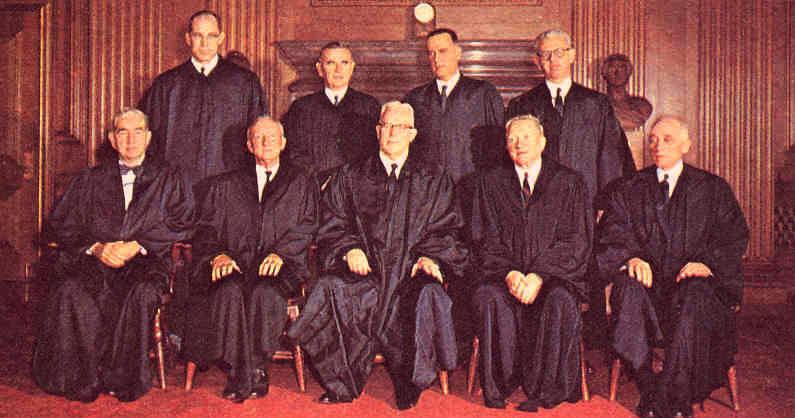19. THE SETTLING IN OF THE COLD WAR


THE BRIEF KENNEDY (JFK) ERA
1961-1963
 Kennedy challenges America to embrace
Kennedy challenges America to embracea "New Frontier" (January 1961)
 The Soviets launch the first person into
The Soviets launch the first person into
space (April 1961)
 The Bay of Pigs Fiasco (also April 1961)
The Bay of Pigs Fiasco (also April 1961)
 Kennedy's rather unsuccessful attempt
Kennedy's rather unsuccessful attempt
at diplomatic summitry (June 1961)
 The Berlin Wall goes up (August 1961)
The Berlin Wall goes up (August 1961)
 The Cuban Missile Crisis (October 1962)
The Cuban Missile Crisis (October 1962)
 Crisis in Vietnam (November 1963)
Crisis in Vietnam (November 1963)
 Kennedy is assassinated (November
Kennedy is assassinated (November
1963)
 Deep social-spiritual change underway
Deep social-spiritual change underway
in America
The textual material on page below is drawn directly from my work
A Moral History of Western Society © 2024, Volume Two, pages 290-300.
KENNEDY CHALLENGES AMERICA TO EMBRACE A "NEW FRONTIER" |
| The
presidential election of 1960 pitted Vice President Nixon against
Massachusetts Senator John (or "Jack") Kennedy. Certainly
Kennedy's youthfulness and personal glamor (and that of his beautiful
wife Jacqueline) made him a very attractive candidate. But he was
a Roman Catholic – which made many Protestant Americans uneasy.
However, Kennedy made it clear that his Catholicism would have nothing
to do with the way he conducted his office. Ultimately, America decided – in a very close vote that November – that Kennedy, not Nixon, would be the one to lead the country forward. In taking office (January 1961), Kennedy also made it very clear that he would continue the idea of Americans themselves being the chief political tool he would use in promoting America abroad. He reaffirmed that the challenge America faced was the "New Frontier" … calling on Americans to action abroad. And he issued his famous challenge: "Ask not what your country can do for you, but what you can do for your country." And that challenge would take immediate form (March 1961) as Kennedy's Peace Corps program, going even further than Eisenhower's People to People program in the way his program was designed to send young Americans abroad – to show Third World villagers the "American way" … by coming to live and work among them for a couple of years. These Peace Corps volunteers would be taught the local language of a Third World country and then be sent there to undertake the task of teaching villagers economic and social skills that would help bring them successfully into the 20th century … on the American side in the competition with the Soviets, of course. And indeed, tens of thousands of recent college graduates joined … eager to be of just such American service abroad. The in-between "Silent Generation"
This age group of young Americans, termed the "Silents," were too young to have served in World War Two or even Korea, like the older Vets. But then the Silents too were older than – and quite different from – the younger "Boomer" age group coming up behind them ... Boomers who would begin to take their place as young adults only in the mid-1960s. In the early-1960s, the older Silents indeed went about the business of serving the nation and the larger world quietly but determinedly … whereas the younger Boomers would soon distinguish themselves in the way they challenged quite loudly their own American nation and its "authoritarian" or "Fascist" social traditions ... in every way imaginable. And America would feel deeply the effect of this shocking generational development … the first of many coming its way. |
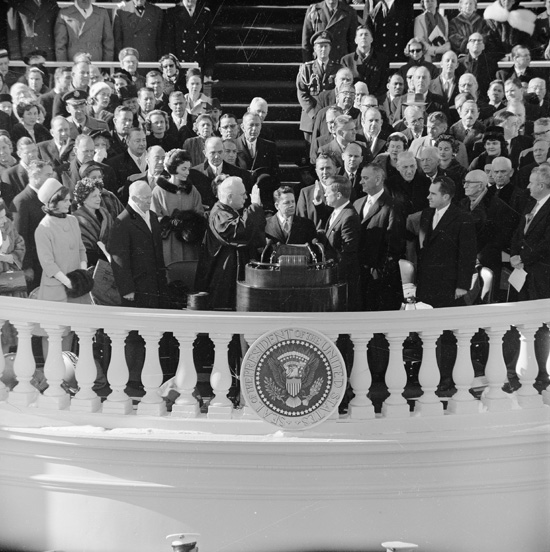
Record Group 111, Records of the Office of the Chief Signal Officer - National Archives
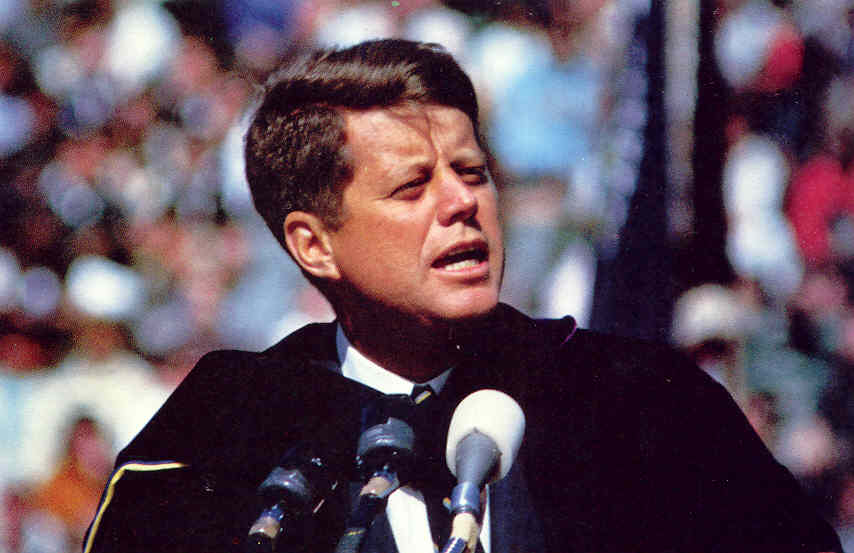
The US Peace Corps becomes the symbol of Kennedy's New Look
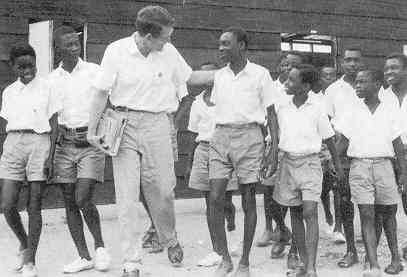
A Peace Corps Volunteer in
Accra, Ghana, with his students
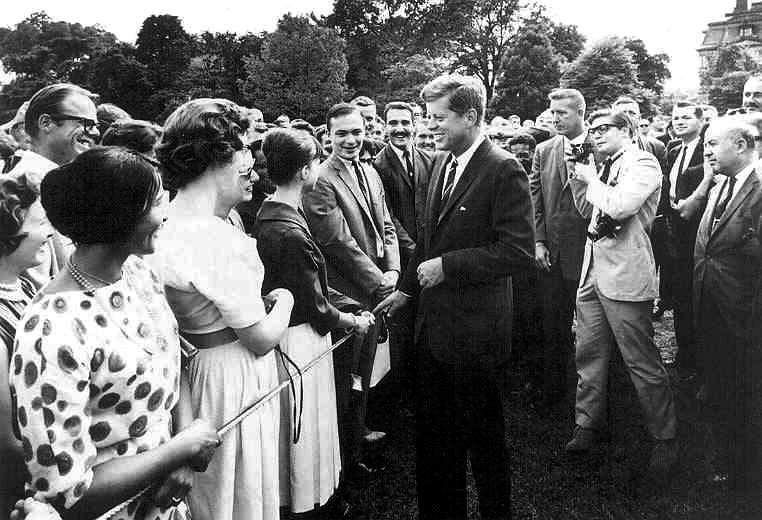
President John Kennedy greeting
Peace Corps volunteers - 1962
THE SOVIETS LAUNCH THE FIRST PERSON INTO SPACE (APRIL 1961) |
The Soviets continue to push ahead in the space race with a number of new "firsts"
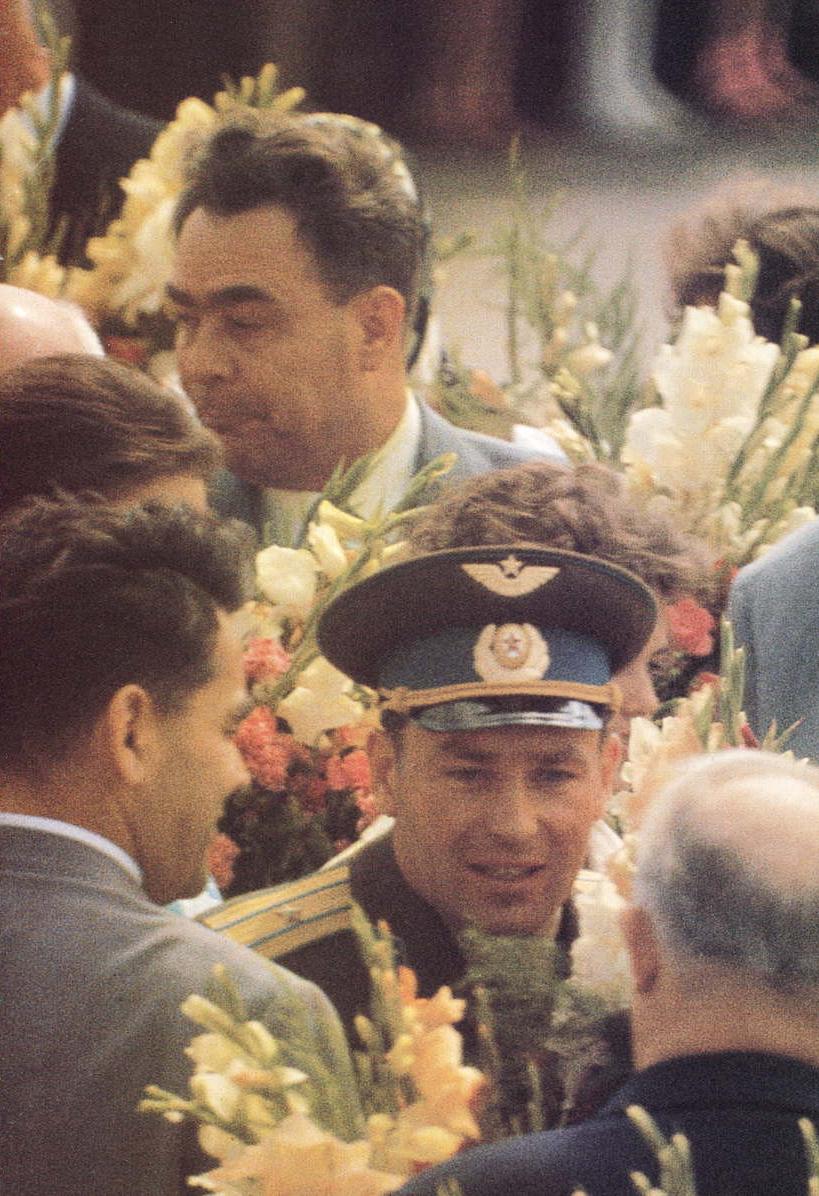
Yuri Gagarin being greeted
in Moscow by Khrushchev
two days after his 89-minute
flight into space - April 1961
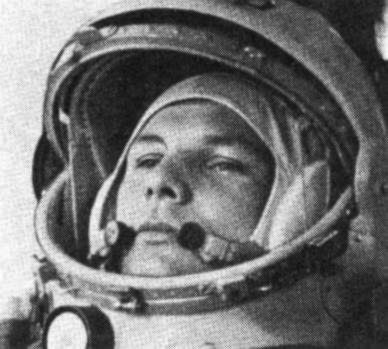 Russian cosmonauts Yuri Gagarin
and Valentina Tereshkova - first man and first woman in space
Russian cosmonauts Yuri Gagarin
and Valentina Tereshkova - first man and first woman in space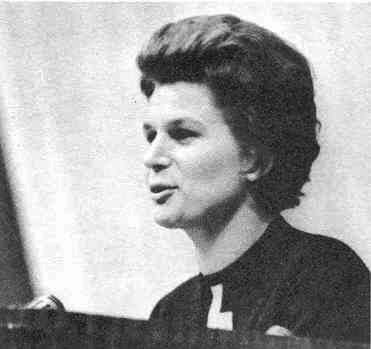
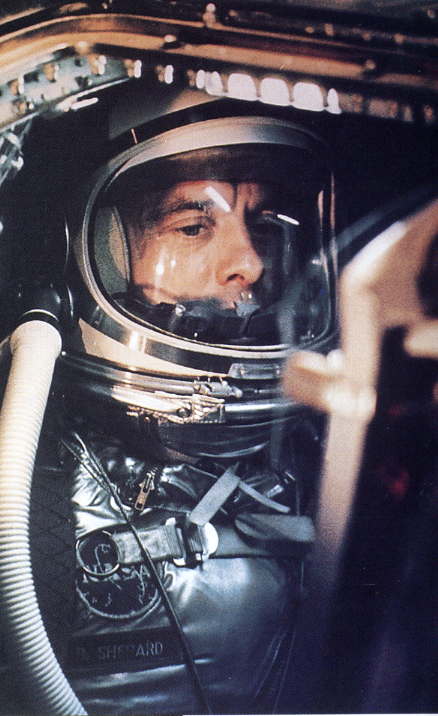
Alan Shepard, Jr. - 1st American
into space - May 1961 (but unlike the Soviet flight
of Gagarin, Shephard did not orbit the earth
THE BAY OF PIGS FIASCO (ALSO APRIL 1961) |
| But
also in his first days in office, Kennedy was to learn that a militia
of 1,400 American-trained Cubans was scheduled quite soon to be
unleashed on Castro's Cuba … with full American support. Kennedy
contemplated the idea of calling this off – realizing that this would
put America in something of the same light as Russia with its invasion
of Hungary in 1956. But something needed to be done about this
society just opposite Florida – that was clearly moving itself into the
Soviet Orbit. So he gave the go-ahead to the operation. But try as he might, his effort to keep America's involvement appear to be minimal was not working. And thus with Castro's military able to stall the militia at the beaches, on the third day of the operation Kennedy called off the American air-cover and resupply of ammunition needed by the militia. The results militarily were disastrous for the militia … who were easily defeated and then paraded as prisoners in front of the world press. And the results were just as disastrous diplomatically for America … as the details of the operation from the beginning (American training of the militia in Honduras and Guatemala) to the end (the withdrawal of full American support) became well known to all. Furthermore, it all made the new young President Kennedy appear to be quite amateurish as a national leader. |
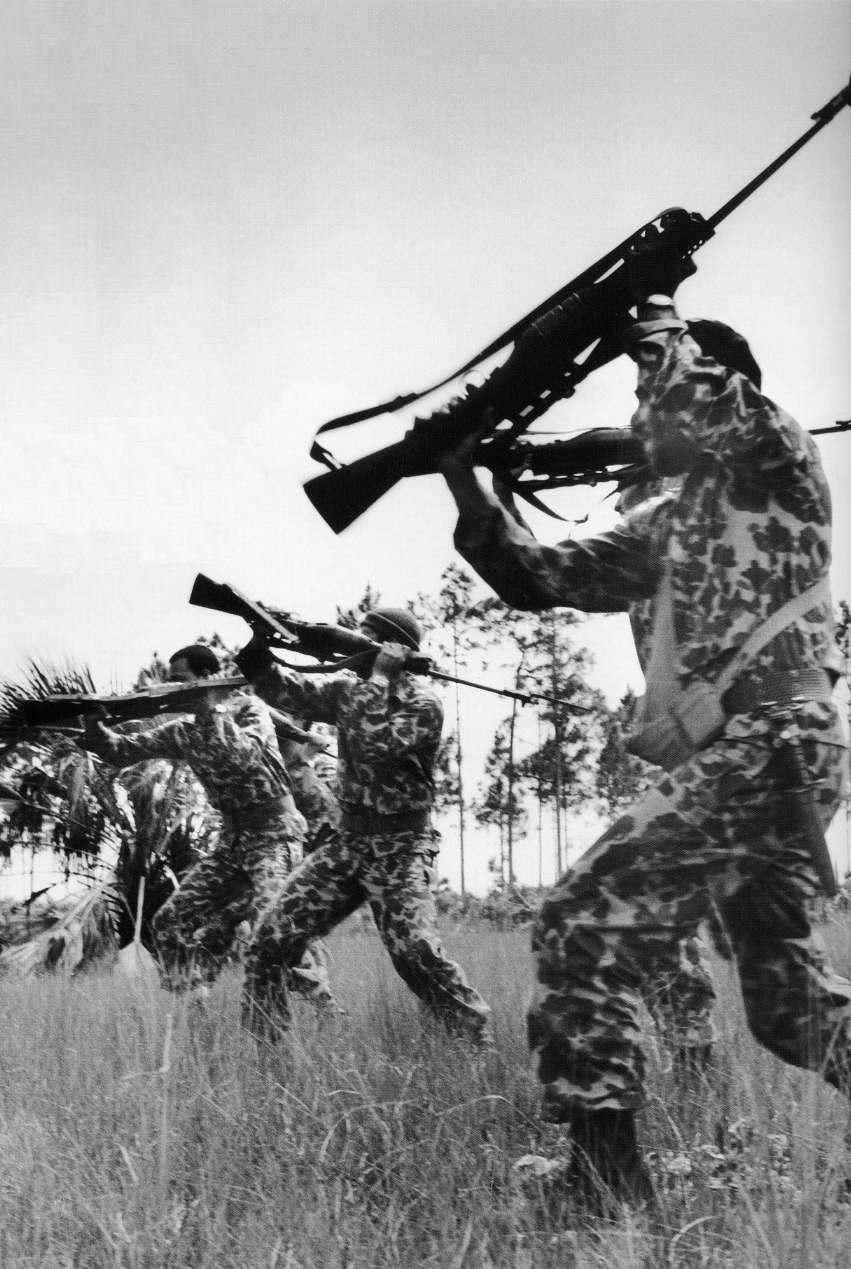
A CIA-sponsored military
training camp for Cubans committed to the overthrow of Fidel Castro (most of these camps were
located in Florida)
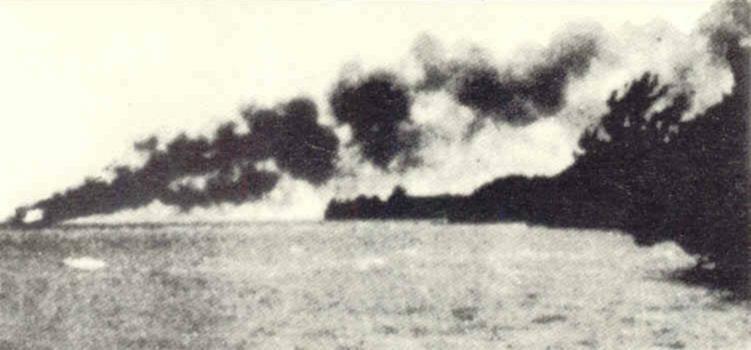
A scene of the military fiasco
at the Bay of Pigs, Cuba - April 17, 1961
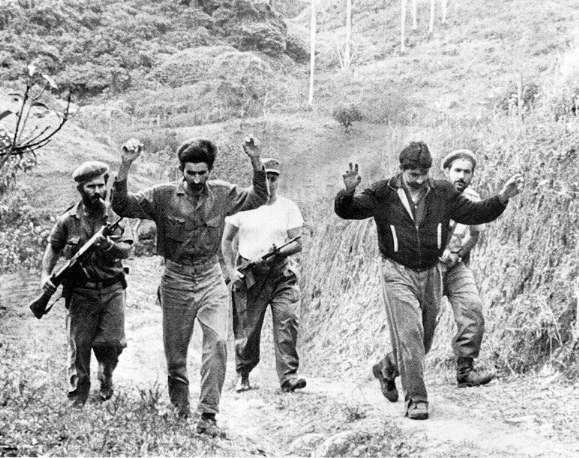
Part of the 1500 member anti-Castro
paramilitaries captured at the Bay of Pigs - April 1961
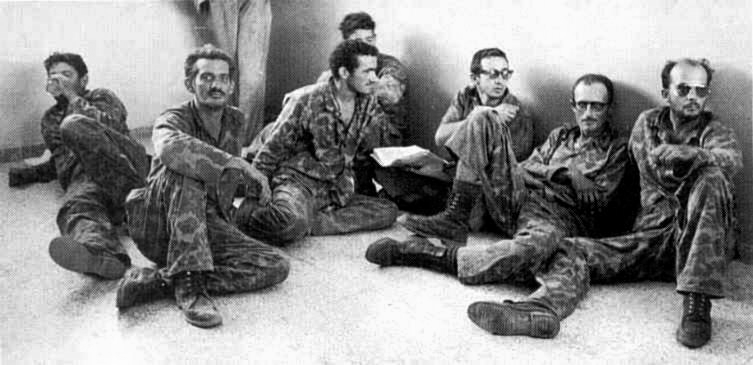
CIA-trained Cuban "liberation"
soldiers captured at the Bay of Pigs
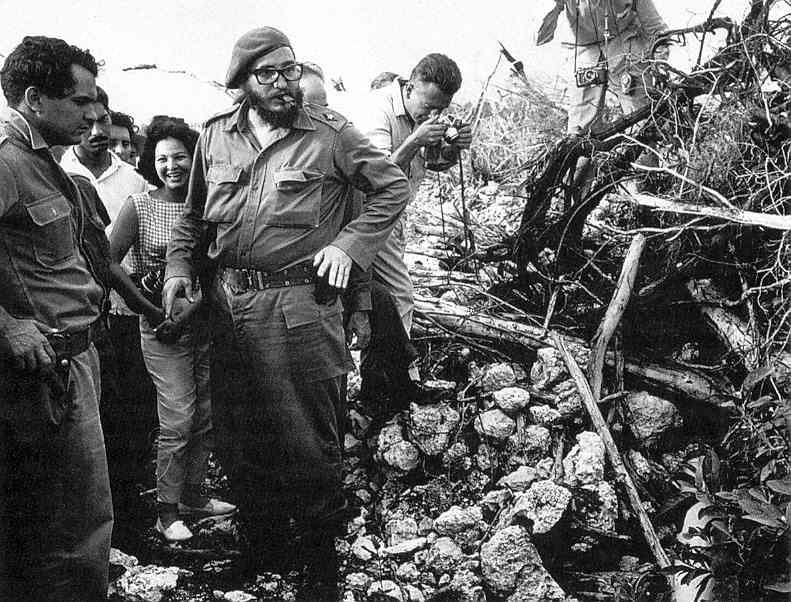
Castro inspects the wreckage
of an American plane that crashed at Playa Giron - April 1961
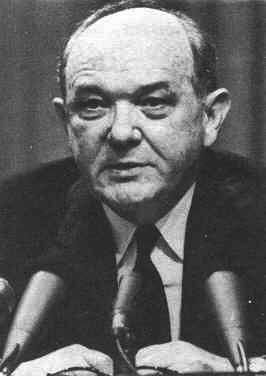
U.S. Secretary of State: January 1961 - January 1969
KENNEDY'S RATHER UNSUCCESSFUL ATTEMPT AT DIPLOMATIC SUMMITRY IN PARIS AND VIENNA
(JUNE 1961) |
| But
Kennedy still pushed forward the idea of keeping the Cold War from
building back up again … especially with Khrushchev's announcement that
he intended to close down the exit of East Berliners – and East Germans
in general – into West Berlin (too much East German professional talent
was escaping to the West through West Berlin). Thus Kennedy
proposed a summit conference with Khrushchev to be held in Vienna in
June … which Khrushchev accepted. On Kennedy's way to Vienna, he
and Jackie paid a "goodwill" visit to de Gaulle in Paris … where de
Gaulle warned Kennedy about Khrushchev's tough style. And indeed, Kennedy came away from Vienna with no gains coming from Khrushchev. Worse, the meeting simply confirmed Khrushchev's opinion of Kennedy as a very weak leader. Thus the Berlin closing moved ahead as scheduled … despite Kennedy's effort to show some degree of diplomatic muscle in announcing that America would be strengthening considerably its support of NATO in Germany. |
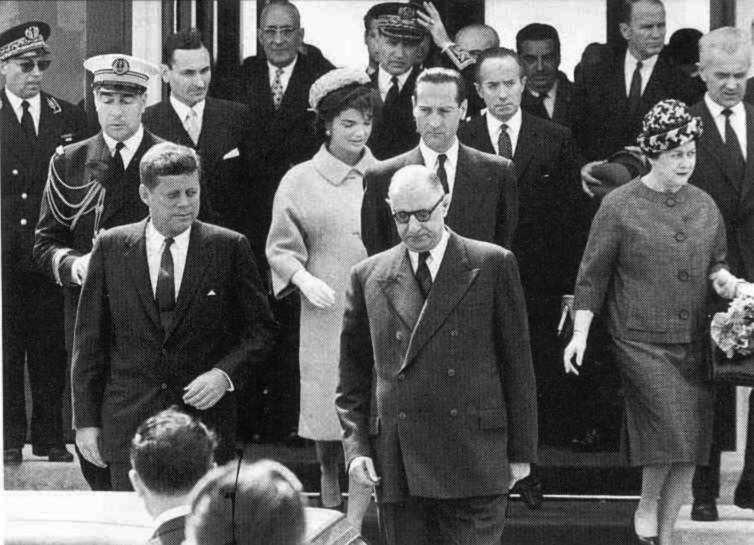
The Kennedys with Charles
de Gaulle outside the Elysee Palace – June 1961
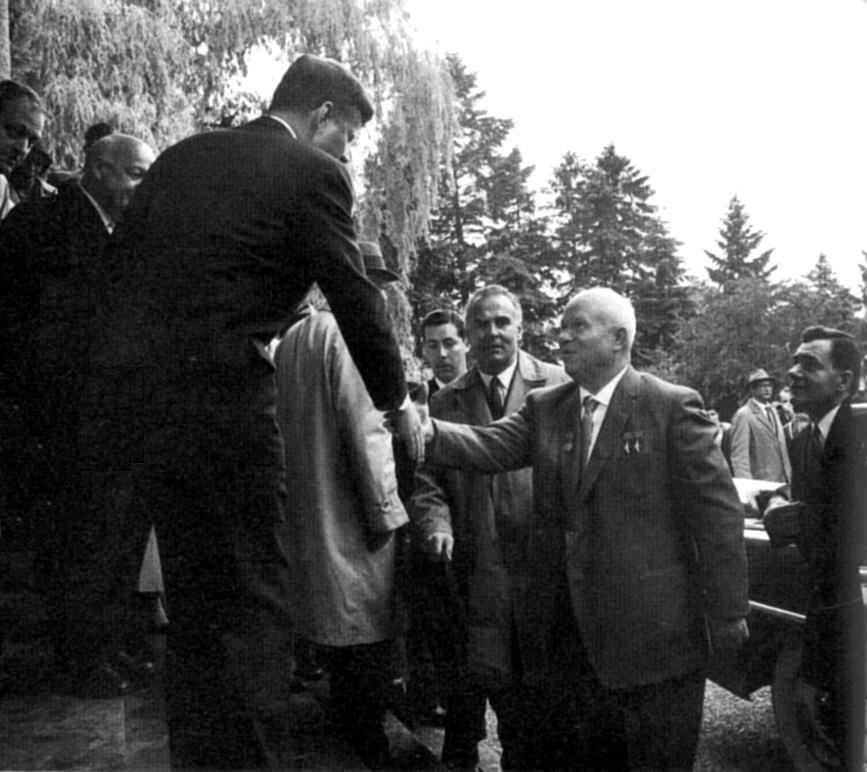
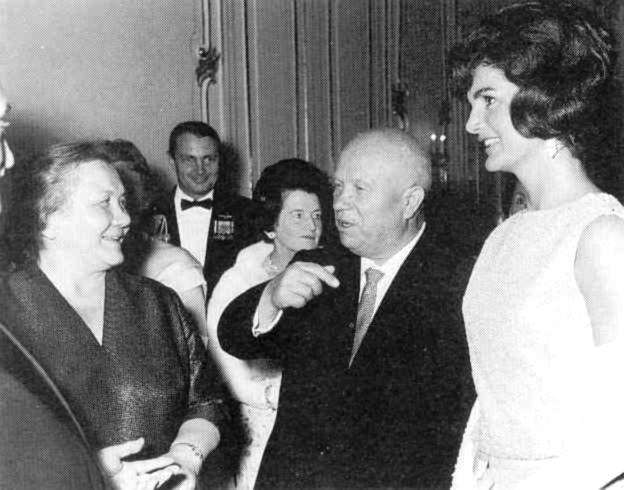
Nina and Nikita Khrushchev
chatting with Jackie Kennedy in Vienna – June 1961
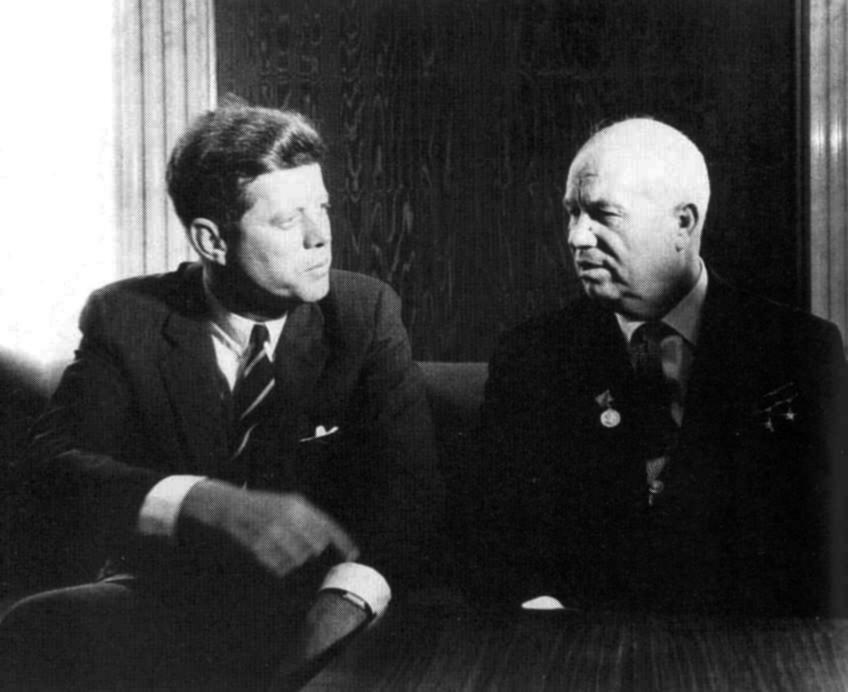
In his "summit" meeting with Nikita Khrushchev (June 1961) Kennedy becomes aware that a new test of East-West resolve is about to occur over Berlin
THE BERLIN WALL GOES UP (AUGUST 1961) |
| Following
the announcement that indeed all exits into West Berlin would soon be
closed, tens of thousands of East Europeans fled into West
Berlin. But finally, on 13 August, East German police began to
put up barbed wire across all the exits … and then began building a
huge wall encircling West Berlin, armed with watch towers and
minefields as additional restraints. And indeed, that closed
completely the last door of escape from the Soviet side of the Iron
Curtain into the West. The world watched closely to see how Kennedy would respond to this challenge. Would he have American bulldozers and tanks take down the wall? Ultimately the only thing Kennedy did was to march NATO troops to Berlin … daring Khrushchev to try to block the West's military access into West Berlin. But otherwise he did nothing in particular about the wall itself. |
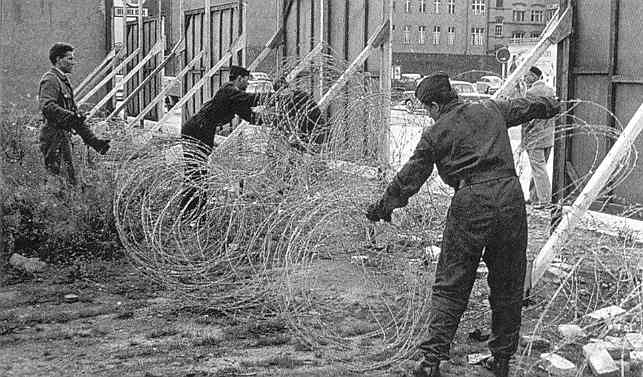
Barbed wire going up quickly
around Berlin - August 1961
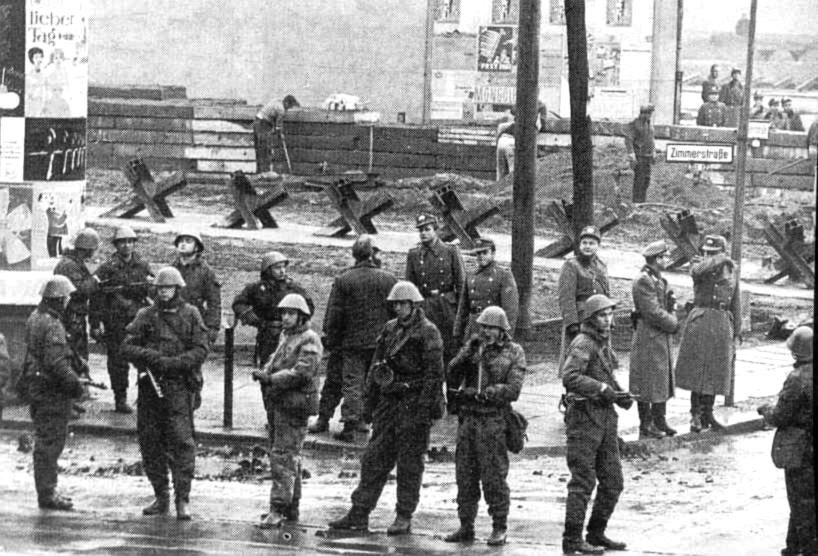
An East-West standoff over
the Berlin Wall – August 1961
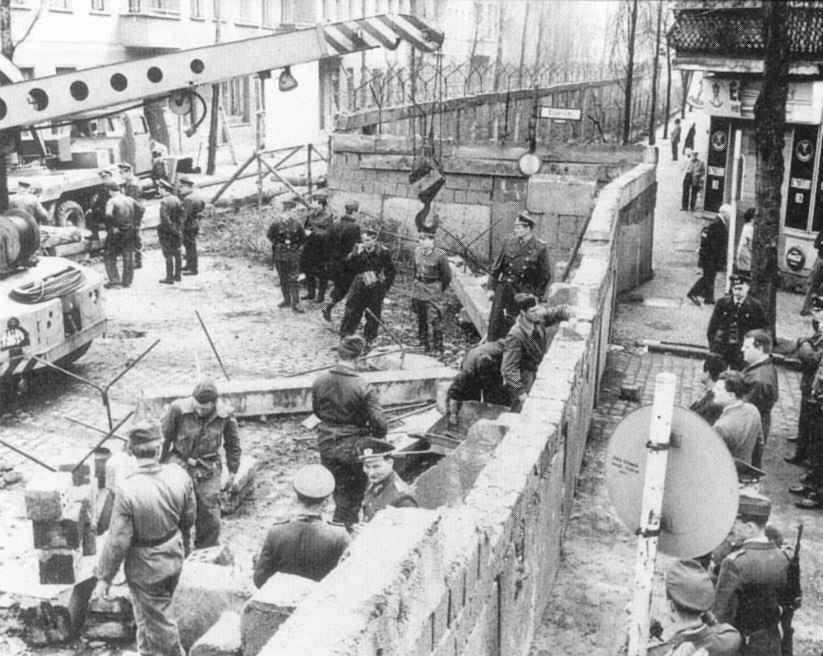
Watching East Germans put
the finishing touches on their own imprisonment
East German border guard
escaping to the West – August 13, 1961
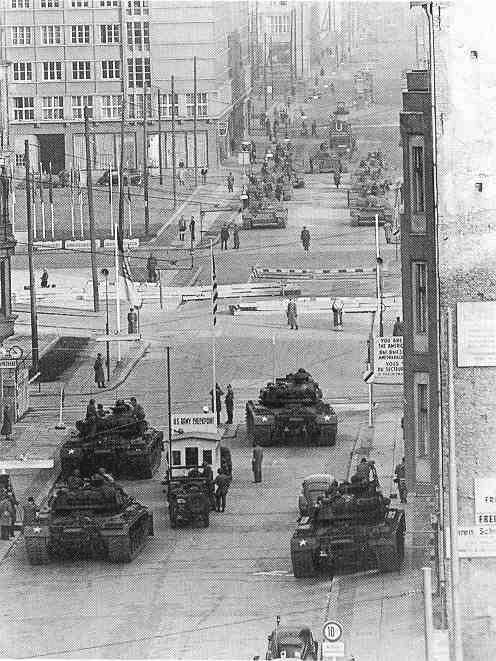
Soviet-American tank standoff
at Checkpoint Charlie in Berlin – October 1961
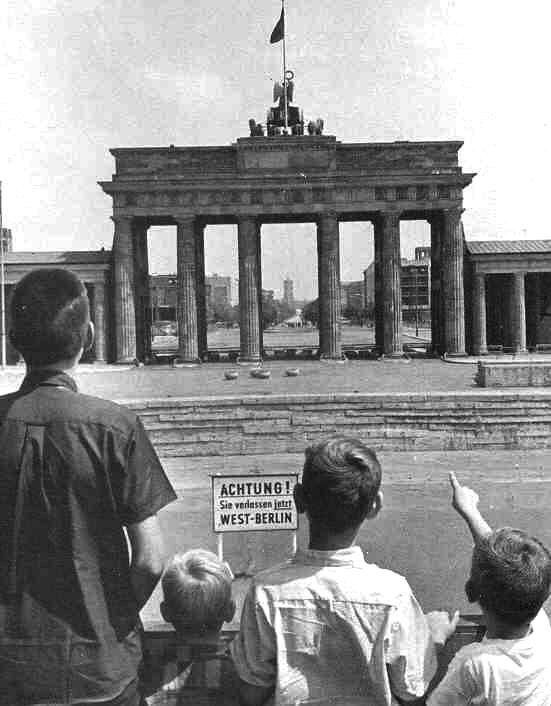
Miles Hodges
Miles Hodges
(29 miles long and 8 to 12 feet high)
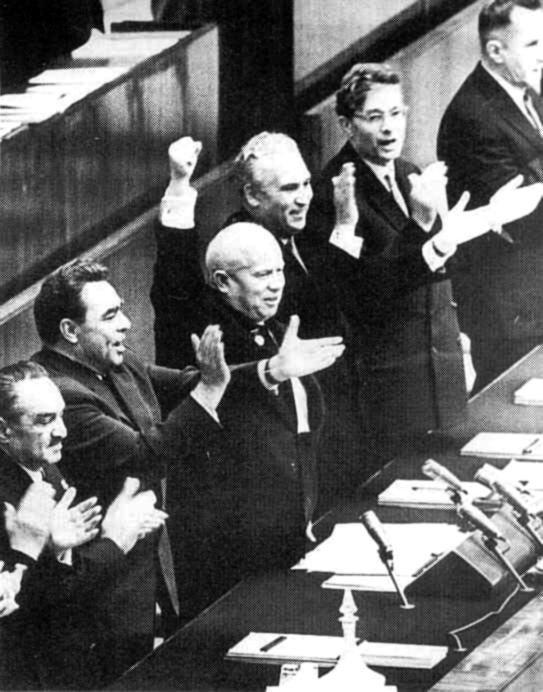
Khrushchev being applauded
at the 22nd Party Congress in Moscow – October 1961
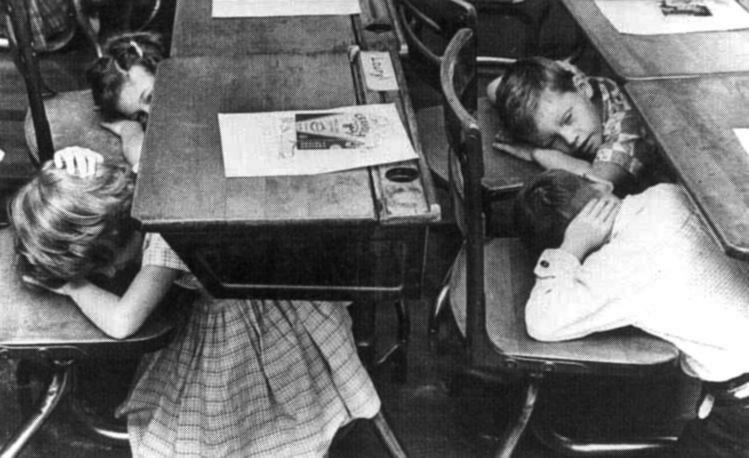
American children practicing
"duck and cover" drills as Soviet American tensions build and
Americans come under a new fear of
a possible nuclear war with an aggressive Soviet Union
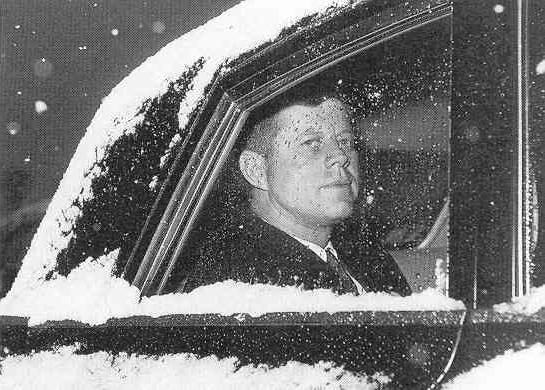
Kennedy finishes out the first year of his presidency as a very tired man – December 1961
THE CUBAN MISSILE CRISIS (OCTOBER 1962) |
| Castro's
Cuba remained a thorn in the American side, and despite the Bay of Pigs
failure, Kennedy and the CIA remained intent on bringing Castro
down. But this made it very easy for Khrushchev to convince
Castro in the summer of 1962 to accept the Soviet plan to place
strategic nuclear-tipped ICBMs (Inter-Continental Ballistic Missiles)
in Cuba … able to reach most of the U.S. That would not only
protect Castro from a direct American military assault, it would
neutralize the American ICBMs placed in Turkey aimed at the USSR … and
it would give Khrushchev additional political leverage in conducting
his Cold War against America on all fronts. Even then Khrushchev had to be very careful in undertaking this venture … first having to convince his fellow party leaders that there was nothing to fear in this – given the weak character of Kennedy – and much to gain in the way this would bring America under the nuclear gun. Also it would involve the development of considerable infrastructure … including the placing in Cuba of tactical missiles to protect the project in its developmental phase. American U-2 spy planes detected the placement of these tactical rockets … presuming them to be there to bring down more of their U-2 planes … and backed off a bit in their overflights. Also a cloud cover moved in over Cuba … blocking any ability to see what was going on below. In the meantime, a number of Soviet missiles were brought in to Cuba to the first 12 of 40 proposed launch sites. Then on 14 October the cloud cover cleared over Cuba … and America immediately knew what was underway there. But what then to do about the situation? Debate now got underway within the Kennedy cabinet about how this or that response would produce this or that result, politically as well as militarily. Meanwhile, rumors about the Cuban situation were already hitting the American press. Deep anxiety was building in America. When Soviet Foreign minister Andrei Gromyko was confronted over the matter, he continued to offer the Soviet excuse that all of this was just tactical weaponry … which of course he knew that the Americans already knew was not true. In short, the Soviets were not really ready to engage in any serious diplomatic discussion over the matter. Finally, on the 21st, the decision was made to place a naval blockade around Cuba in order to block further shipment of missiles and material to Cuba from Russia. This actually constituted an act of war … though the Kennedy team knew that it was not sufficiently provocative to initiate a nuclear war … with America having some 15 times the number of Soviet nuclear warheads – and an already operational delivery base in Turkey. The next day America's Latin American neighbors forming the Organization of American States (OAS) met … and decided to give full support to Kennedy's "quarantine" isolating Cuba – a severe blow to Castro diplomatically. Then that evening, Kennedy went before the American people (and the world) to describe in detail the problem … and the decided American response. Things got very tense over the next days. The American naval blockade was put in place immediately … and stopped some ships headed for Cuban ports – but let them pass when it was discovered that they were carrying no strategic materials. But Soviet ships carrying the ICBMs were still headed toward Cuba … with the world watching nervously as they drew closer to Cuba. Meanwhile, construction at the launch sites continued. Indeed, Castro became so convinced of a pending American military assault on Cuba that he called on Khrushchev to issue orders for a nuclear strike on America, even if conducted only by the smaller nuclear missiles presently in place, missiles which could probably reach no further than Miami. That was truly a strange request – for it would have meant a full nuclear attack in response, one that would have completely destroyed Cuba … and one starting an all-out nuclear war between Russia and America. There was no way that Khrushchev was willing to go down that road. Finally, on the 27th, Khrushchev came out with a diplomatic counter-offer: he would remove his missile from Cuba if America did the same with its missiles in Turkey. Castro was deeply angered that this offer had been made without prior consultation with him by Khrushchev … although there was little that Castro could do about the matter. But clearly, he was ready to see Cuba destroyed … if it meant that America – and much of the rest of the world – were also destroyed in the process.1 Now the back-and-forth got very serious when on that same day a U-2 plane was shot down over Cuba … Khrushchev being quick to claim that it had been a Cuban action, not a Soviet action (although only the Soviets had the power to conduct such a strike). A furious America then responded that if another plane were shot down, then the Americans would have to attack all the missile sites … killing numerous Soviet technicians as well as the missile infrastructure. At this point Khrushchev realized that he was not up against just some young, weak American president. This was serious business. But at the same time, the American threat was counterbalanced by America's acceptance of Khrushchev's offer to remove the Soviet missiles. The Turkish removal was not mentioned specifically, but was implied as an exchange to be conducted "voluntarily." The next day (the 28th) Khrushchev announced his approval of the deal ... including specifically the Turkey-missile removal in exchange. But still, Soviet ships with ICBMs continued to head toward Cuba … and the American blockade also continued. Finally, as the Soviet ships approached the blockade, they were ordered to turn around. The Soviet-American agreement was indeed now effectively in place. But what was not known to America was that smaller nuclear-armed rockets, not part of the accord, Castro wanted to have under his own command in case of the continuing possibility of an American assault on his regime. This startled Khrushchev sufficiently to have even these removed on the 22nd! Also what was not known in America was how close America and the world had come to a full nuclear engagement … when an American ship dropped depth charges in Cuban waters – unknowingly nearly hitting a Soviet submarine located there. The submarine had orders to launch its nuclear-tipped missiles if it came under attack … but an order that could be given only if all three commanding officers agreed to the attack. Two did. Thankfully, a third did not … sparing the world a nuclear attack that would most likely have quickly spun itself into a global nuclear holocaust. Anyway, with the Kennedy-Khrushchev agreement in place, now began the dismantling of the Soviet missile sites in Cuba and the 150 nuclear warheads based there. Even Soviet bombers based in Cuba were flown home. Thus by 20 November, Kennedy was able to announce to the world that the blockade was being lifted. And at this point then began the more complicated removal of the American missiles based in Turkey … the project completed by the spring of the following year (1963). Thus the Cuban Missile Crisis and its diplomatic outfall was over. Overall, the event played strongly in Kennedy's favor, strengthening his image as a very strong American president. And it would likewise undercut Khrushchev's standing at the Kremlin, indeed being one of the reasons his fellow party members cited in demanding Khrushchev's retirement in 1964. Khrushchev would be the first, however, to be retired from Soviet power alive – being allowed to live out his life comfortably (but sadly) at home and at his dacha resort … although politically and historically he would immediately become a "non-person" – carefully and fully forgotten by the society he once led. 1What is especially terrifying about this experience is that it makes clear the fact that such socially suicidal instincts as Castro’s are not unknown among self-important political leaders willing to bring down the rest of humanity rather than deal with the failure of their own leadership (Hitler being clearly a recent example, not to mention Castro). With nuclear weapons in the hands of such individuals, the world would find its very survival quite problematic. Hopefully the world will be able to keep nuclear weapons out of the hands of such individuals, although in the end only God can offer mankind such protection. The weak Kennedy response to Soviet challenges emboldens Khrushchev to try to plant deadly nuclear missibles in nearby Cuba – October 1962. Playing with nuclear-tipped missiles was a very deadly game at this point Green H-bomb cloud over Honolulu – July 19, 1962. 800 miles to the west another US H-bomb test had been set off (the first one - 500 times more powerful than the A-bomb - was tested in 1952). By this time the Soviets had their own model of the H-bomb. 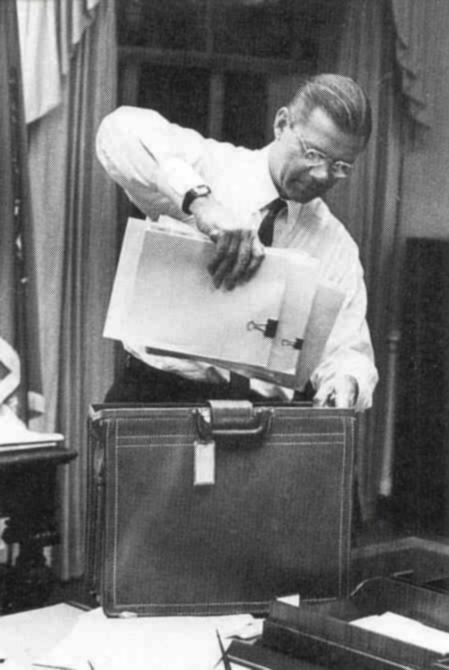
Secretary of Defense Robert
McNamara, whose public comments in the spring of 1962
caused the
Soviets to fear
that the US might be planning a pre-emptive nuclear attack
on the Soviet Union 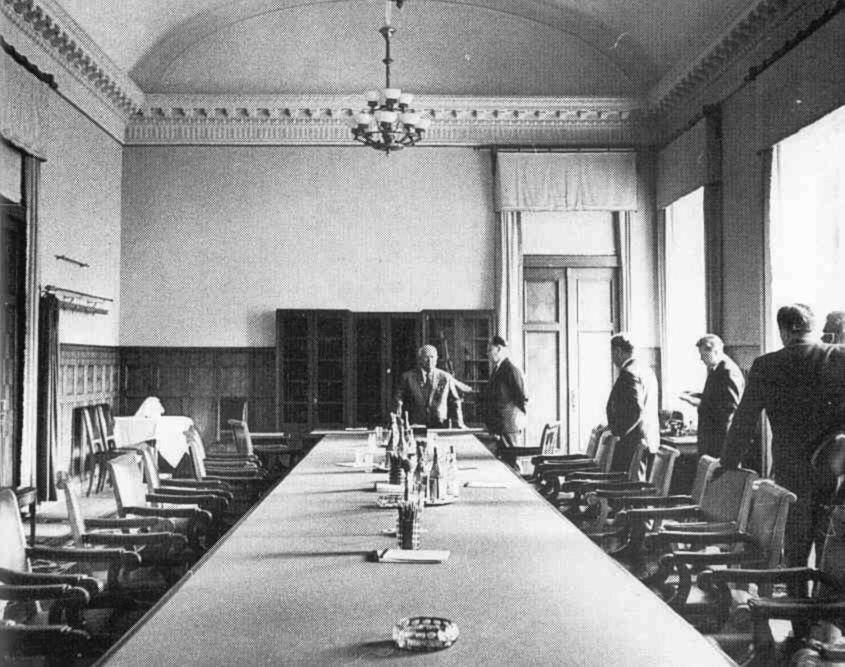
Khrushchev meeting with his
advisers in the Kremlin to discuss the possibility of a US invasion
of
Cuba – and the Soviet Union's deterrent
in the form of nuclear tipped ballistic missiles
placed in Cuba - April
1962 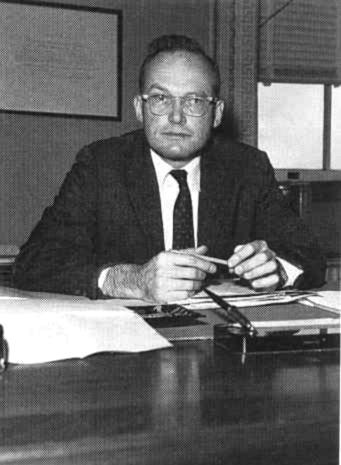
McGeorge Bundy, National
Security Adviser, who informed Kennedy early October 16, 1962,
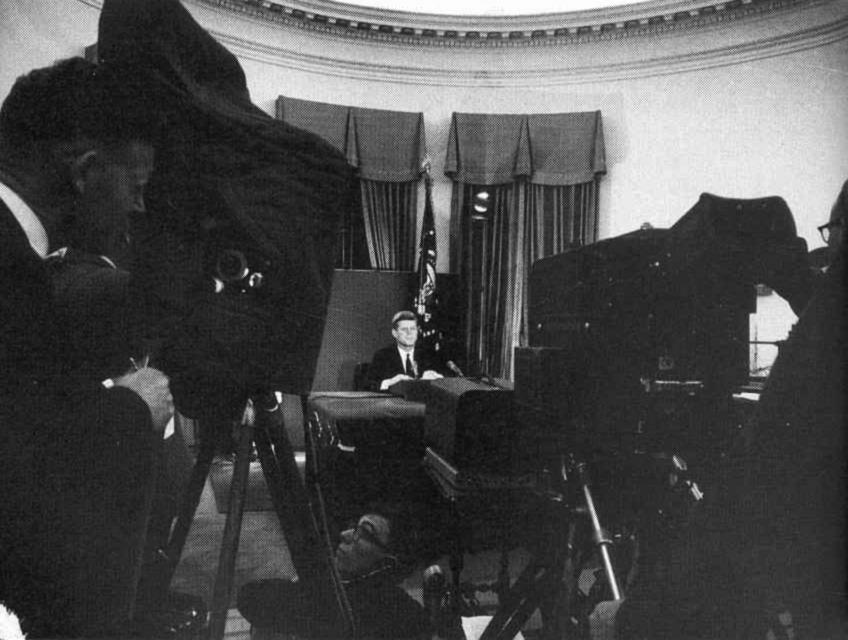
Kennedy's televised announcement
to America about the Cuban missile crisis – and the proposed American
response – October 22, 1962 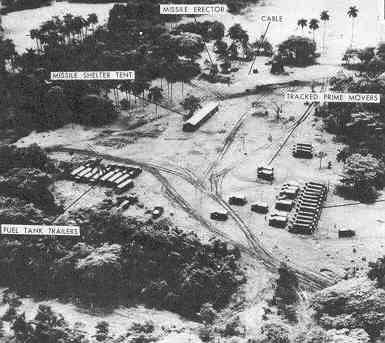
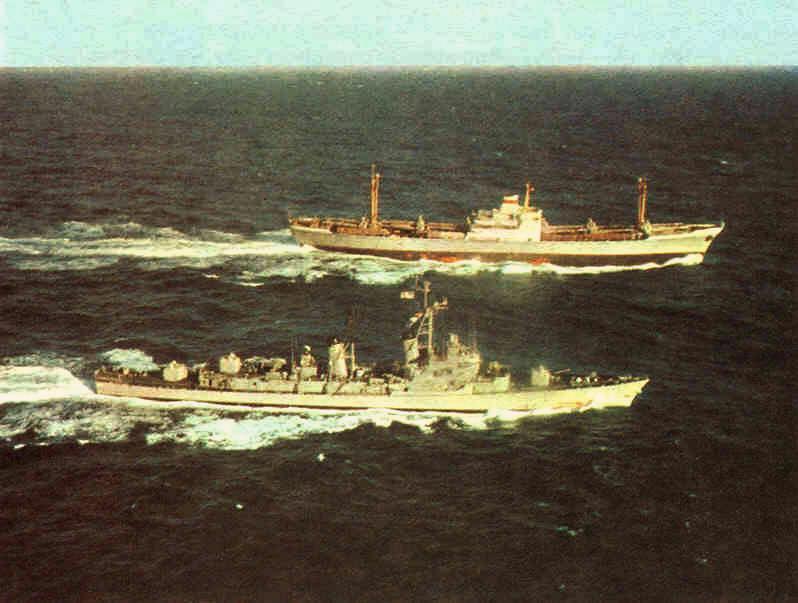
An American warship inspecting
the cargo of a Soviet ship near Cuba – 1962 An American warship escorting
a Soviet tanker carrying missiles out of Cuba – summer of 1962 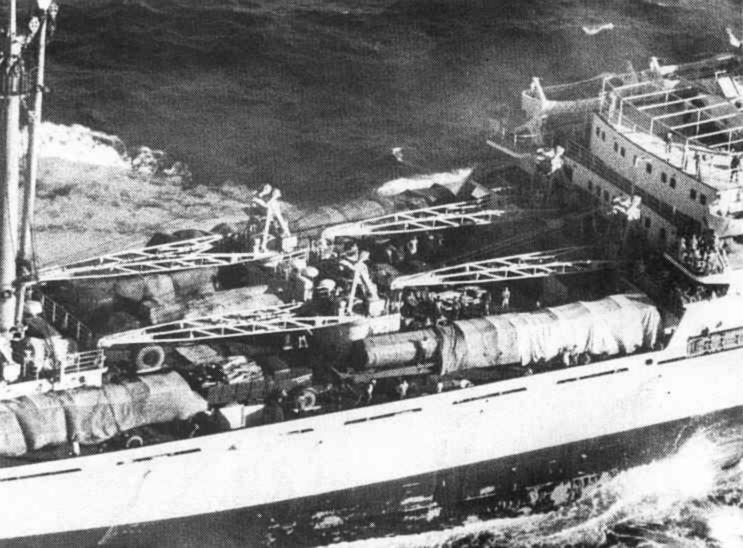
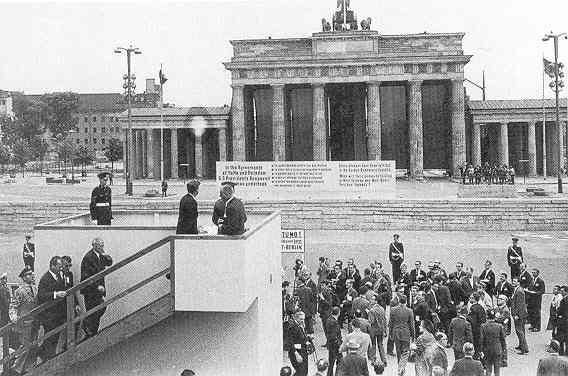
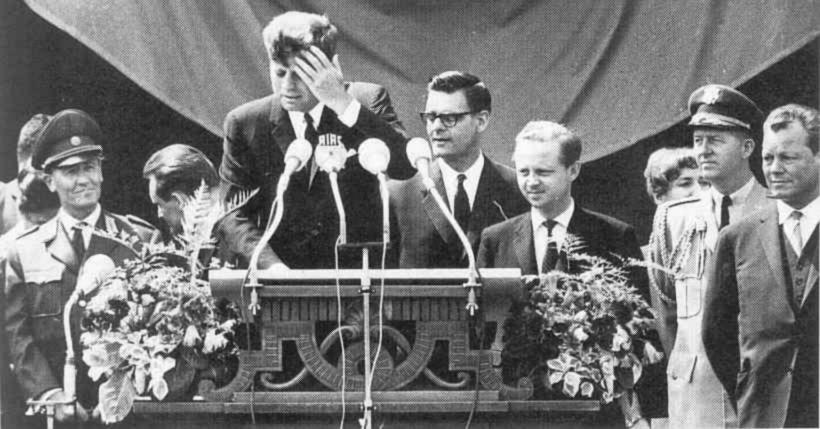
Kennedy delivering his "ich
bin ein Berliner" speech – June 1963 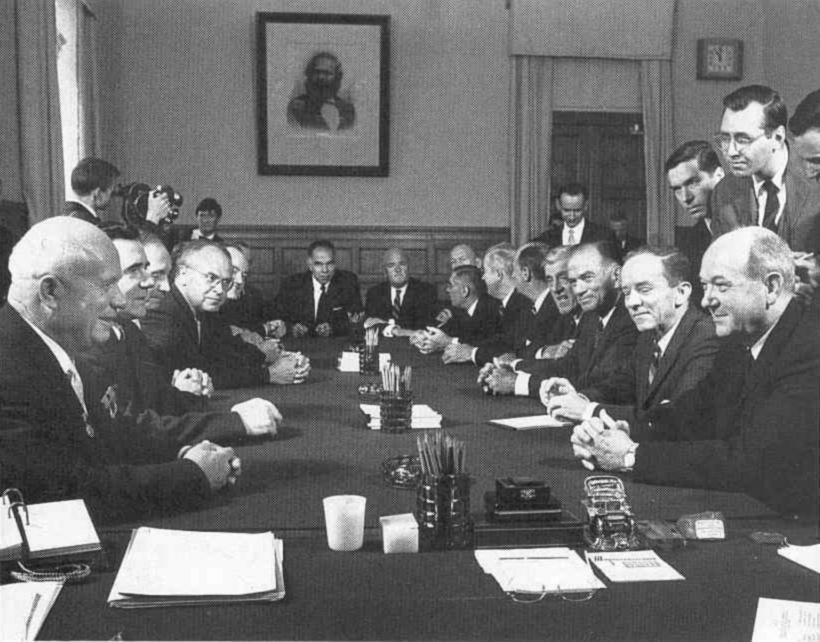
Signing the Test Ban Treaty in Moscow – August 1963

Leonid Brezhnev (left) celebrating Khrushchev's 70th birthday – April 1964 – while secretly plotting Khrushchev's overthrow (in October his Party colleagues stripped him of all political positions, forcing him into retirement) 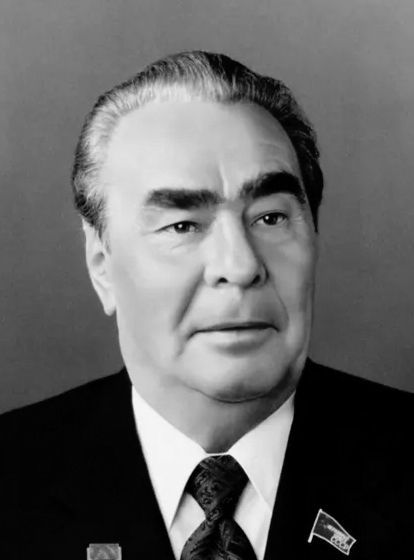
Leonid Brezhnev –
Communist Party General Secretary (1964-1982) 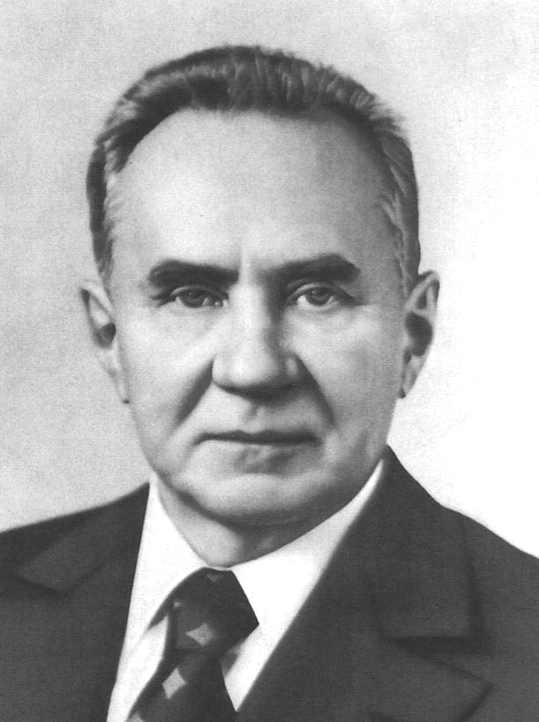
Alexei Kosygin – Soviet Government Premier (1964-1980)
|
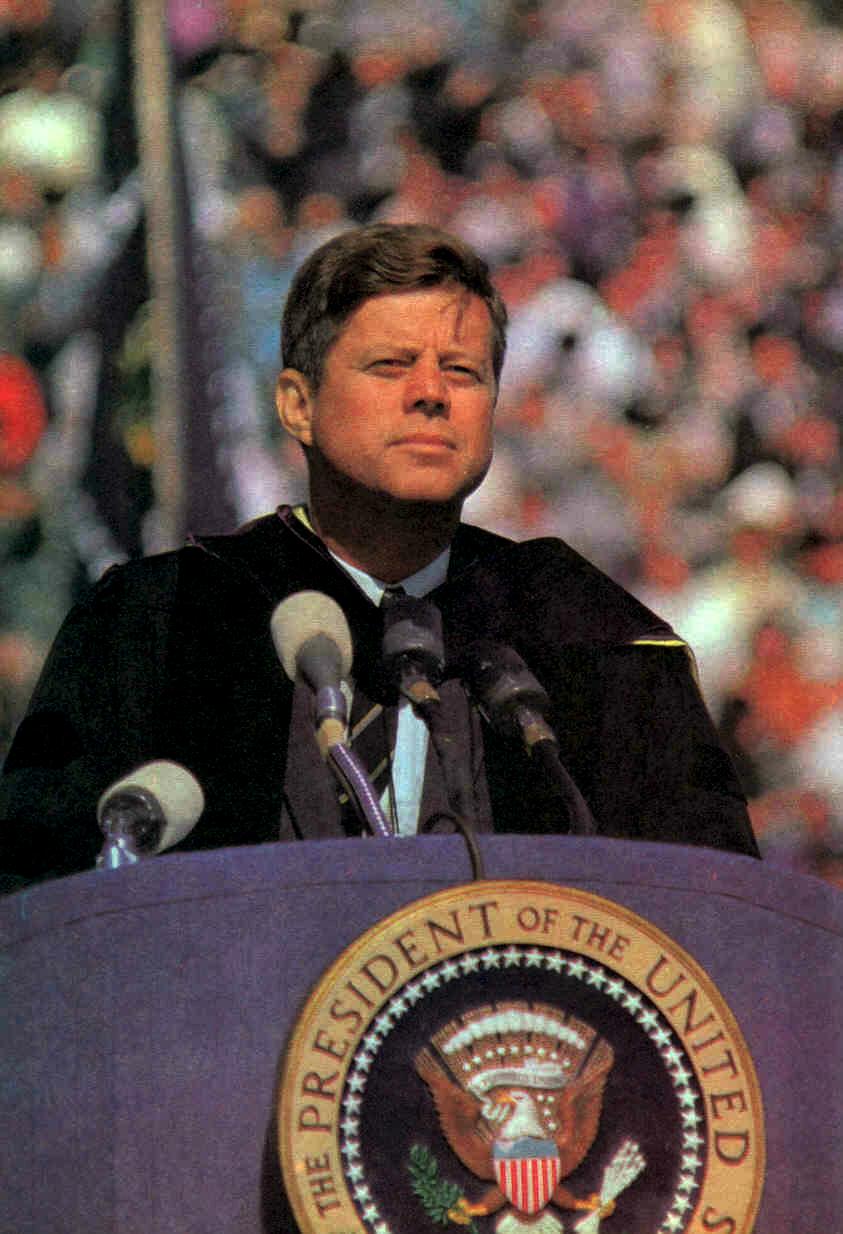

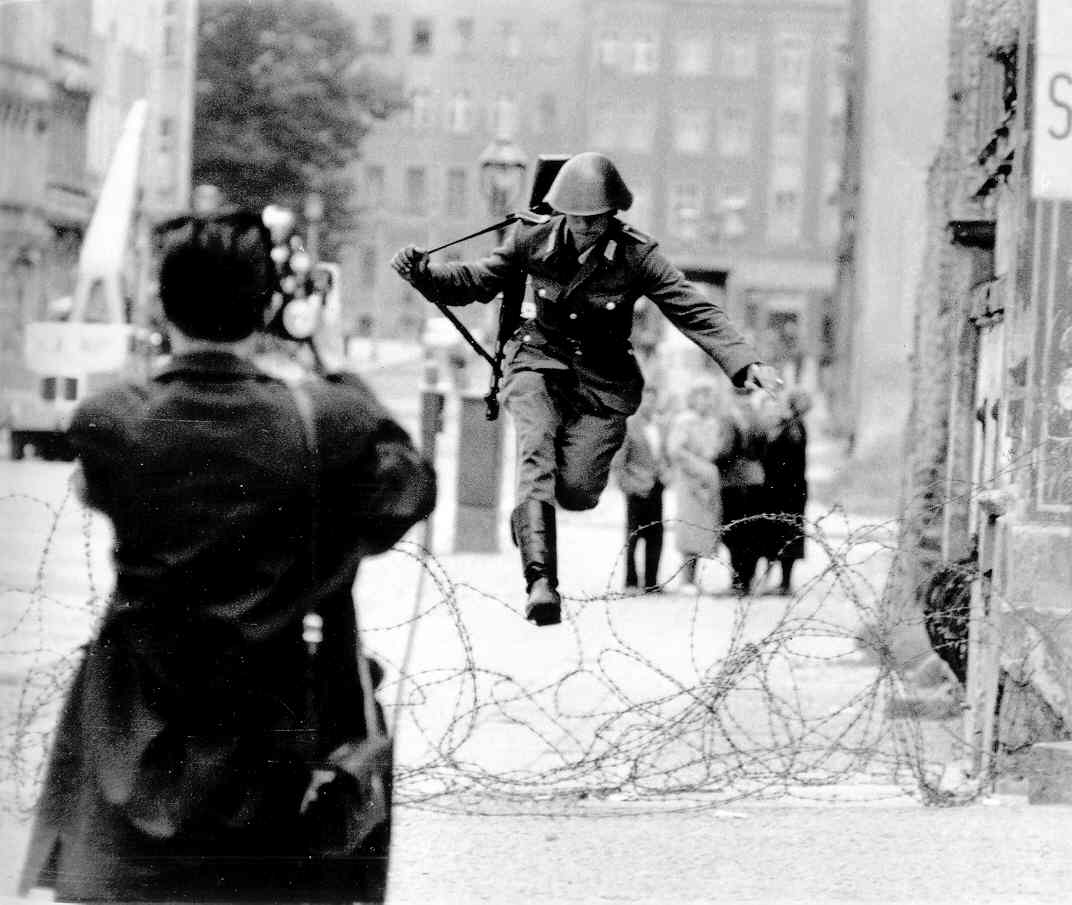
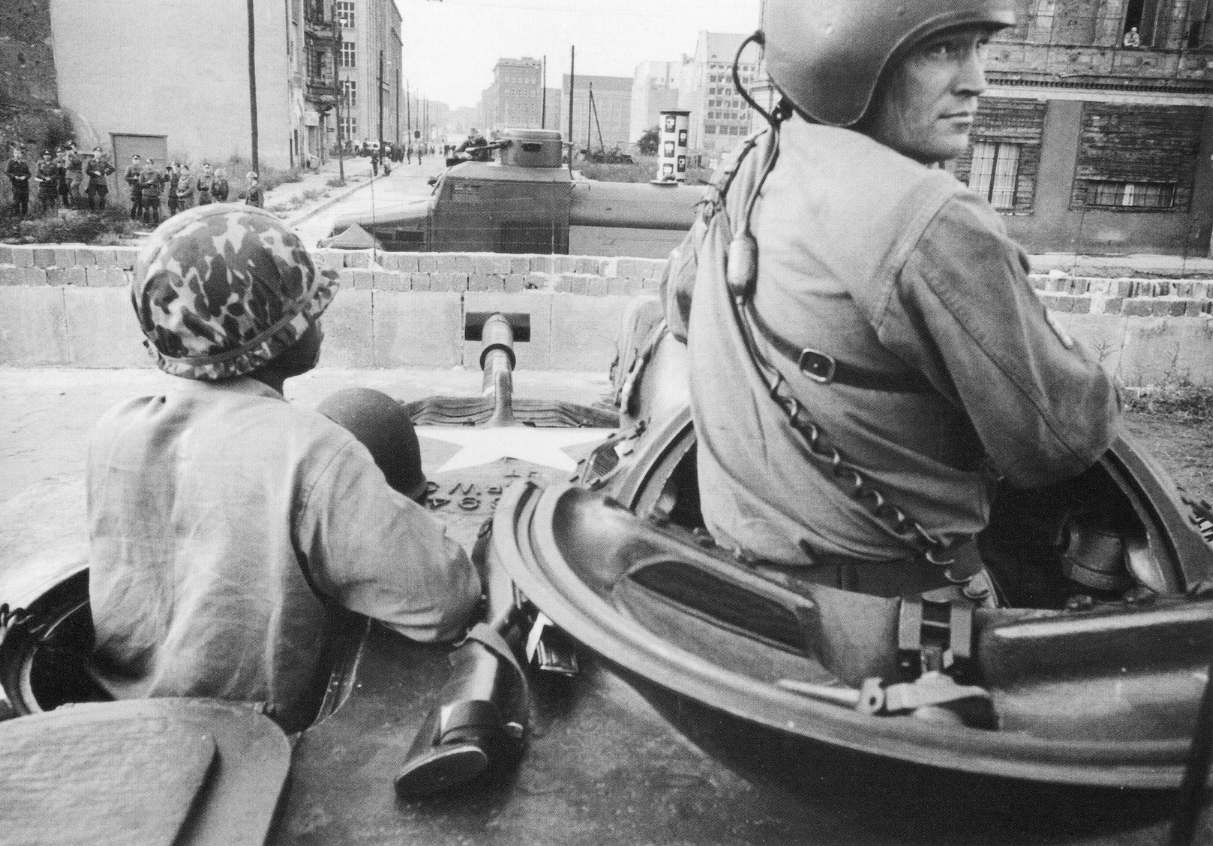
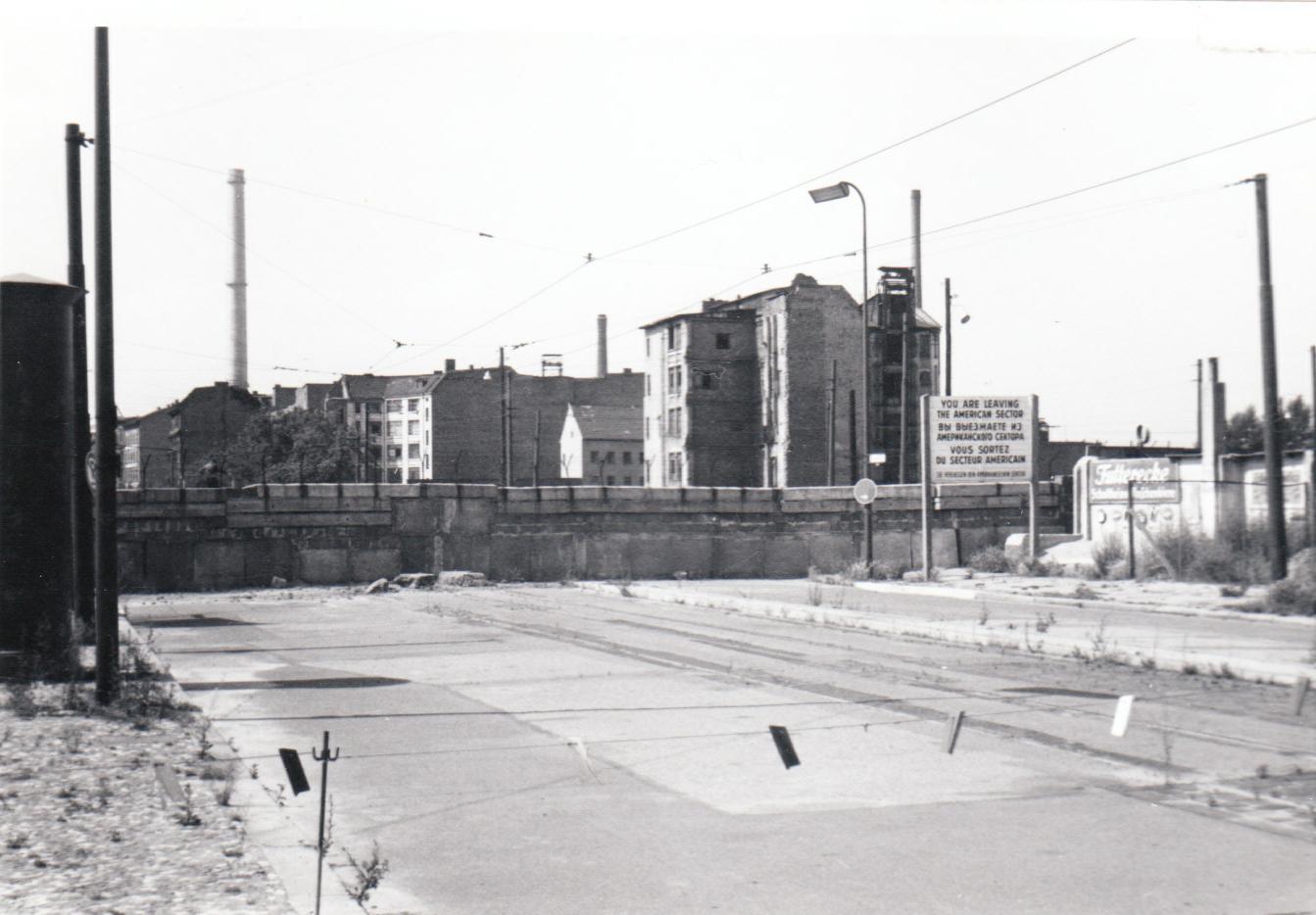
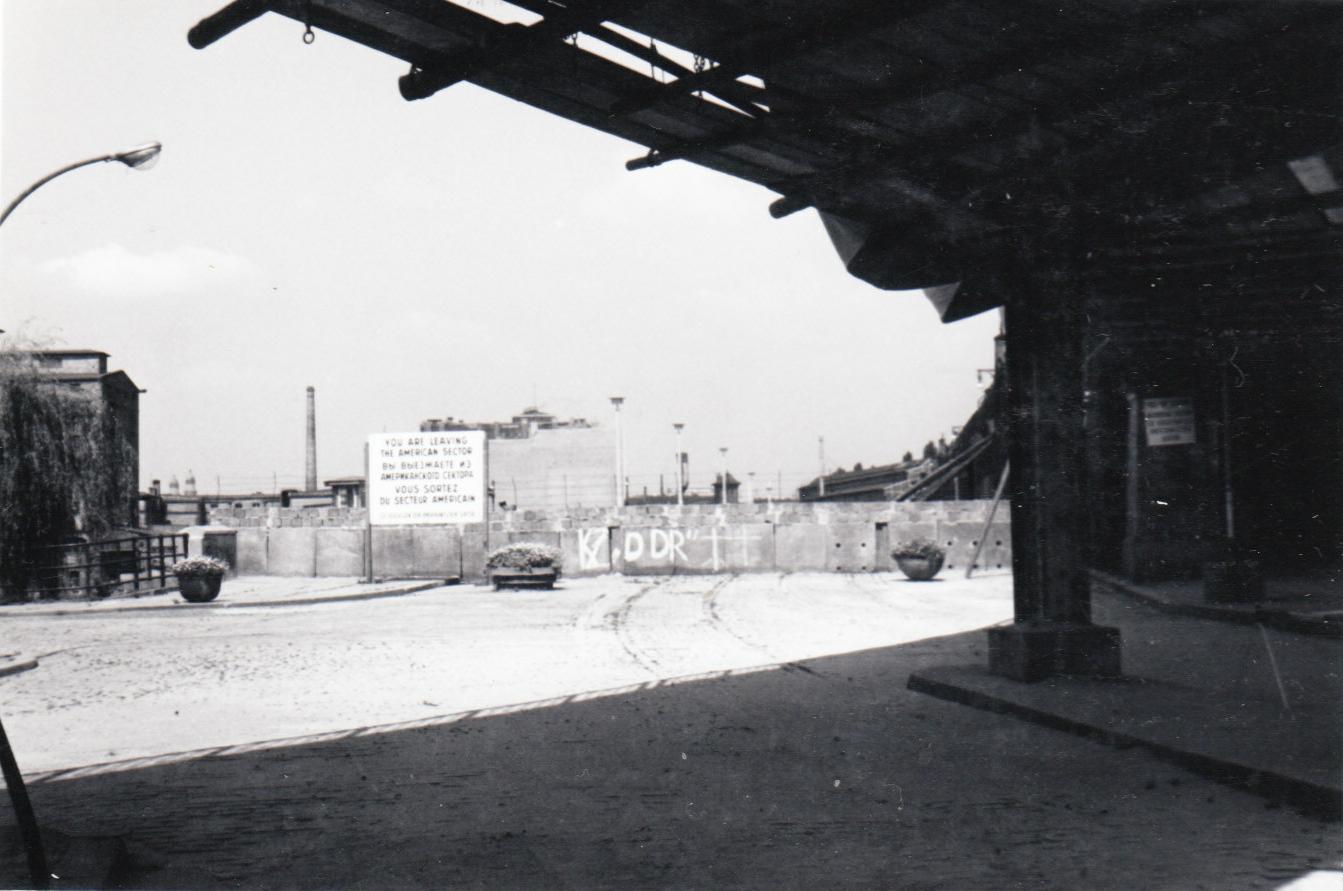
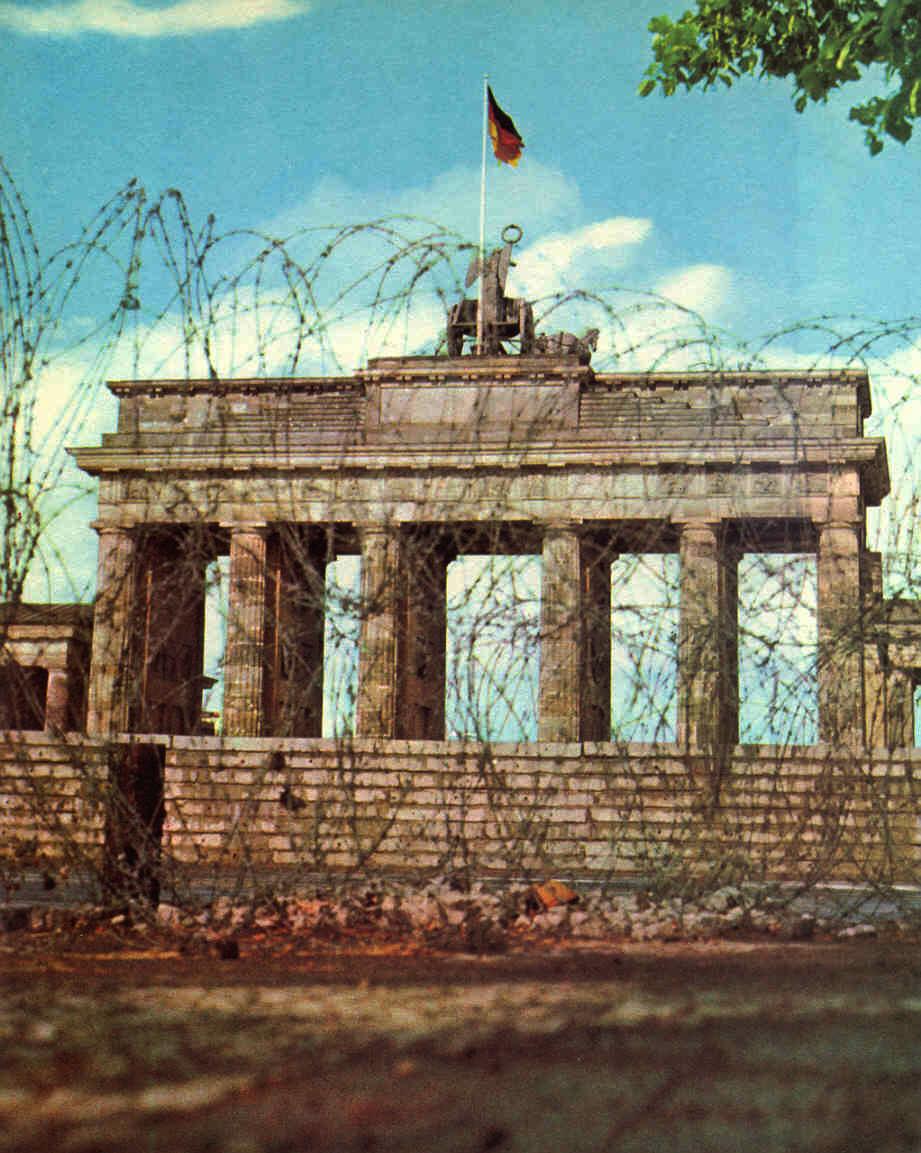
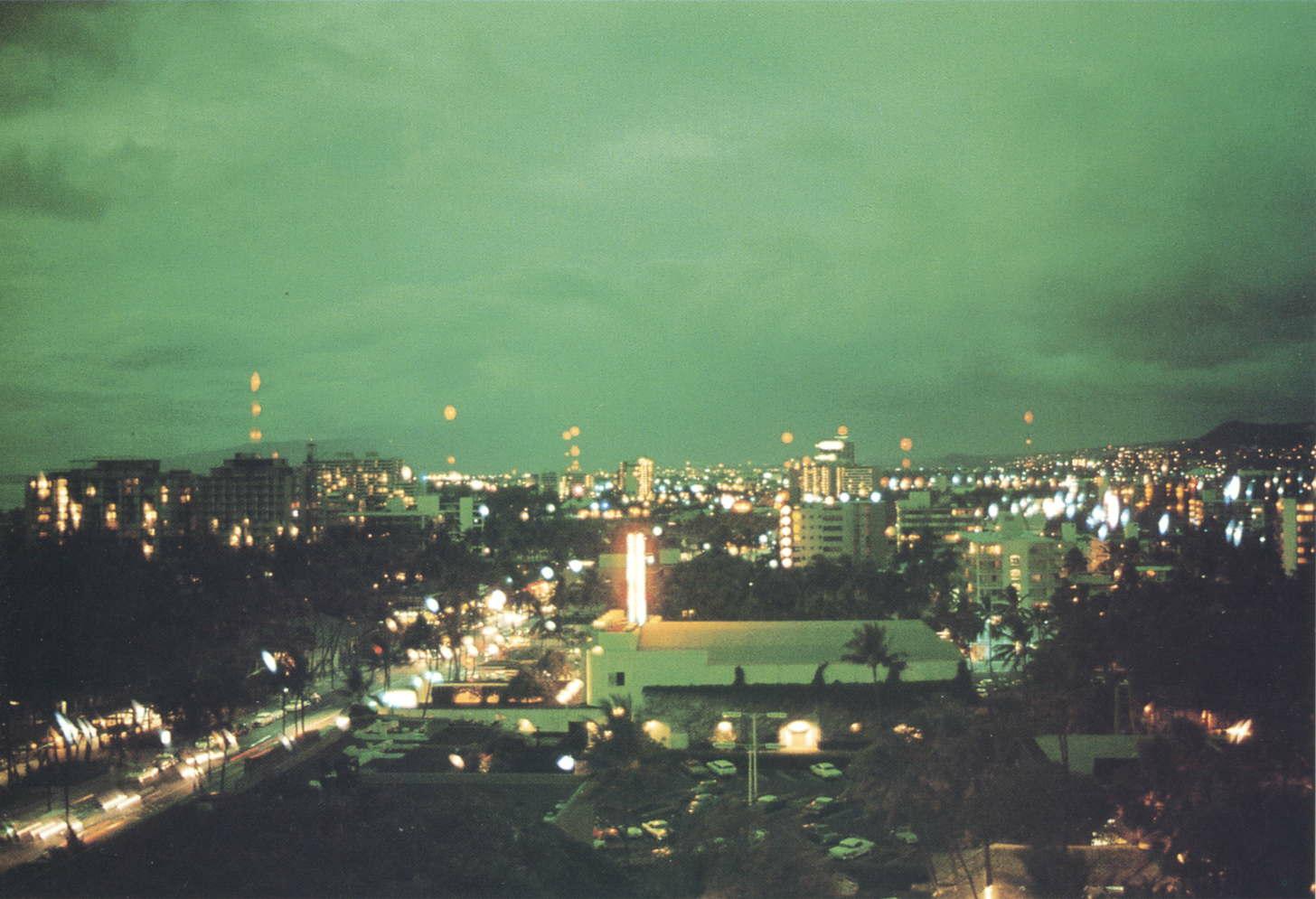
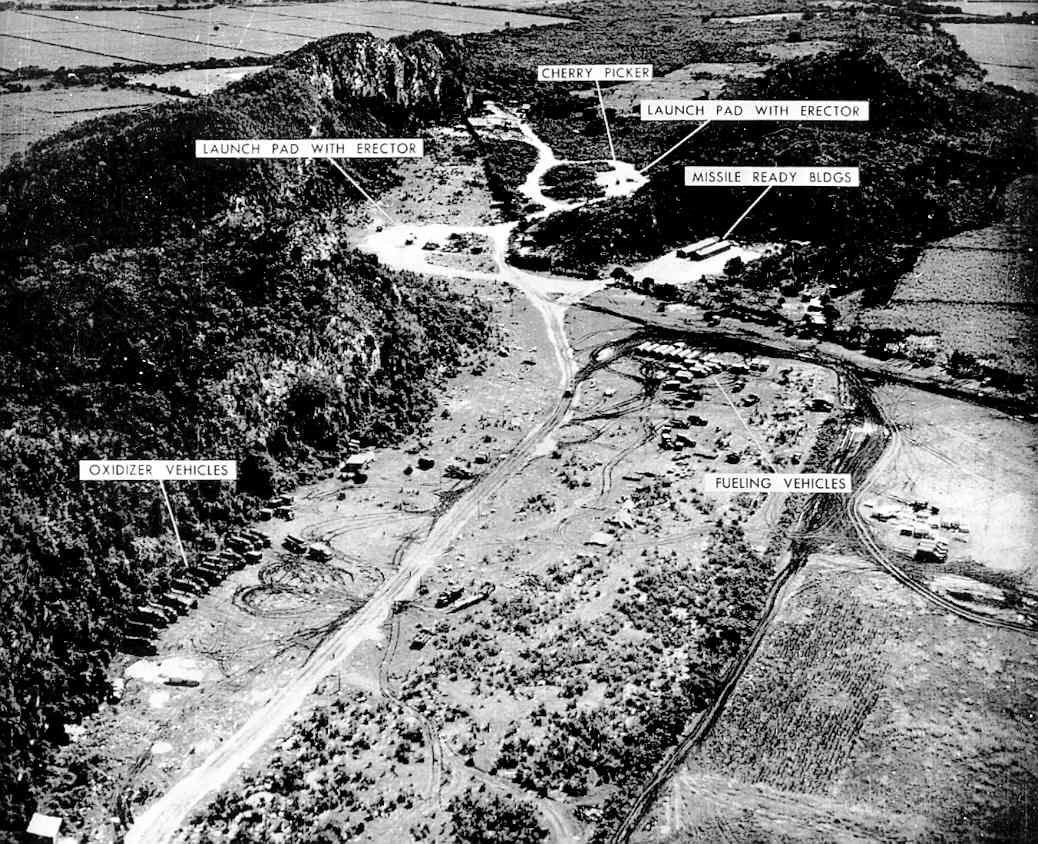
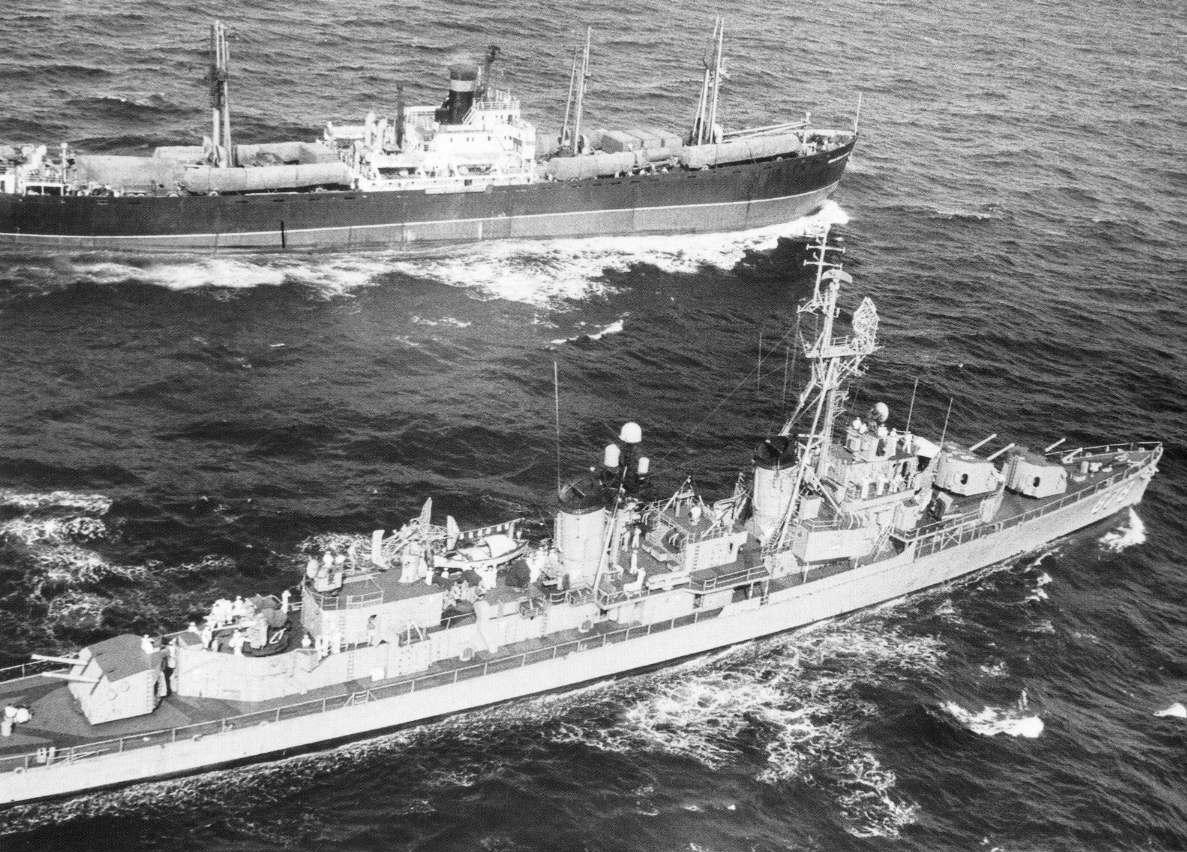
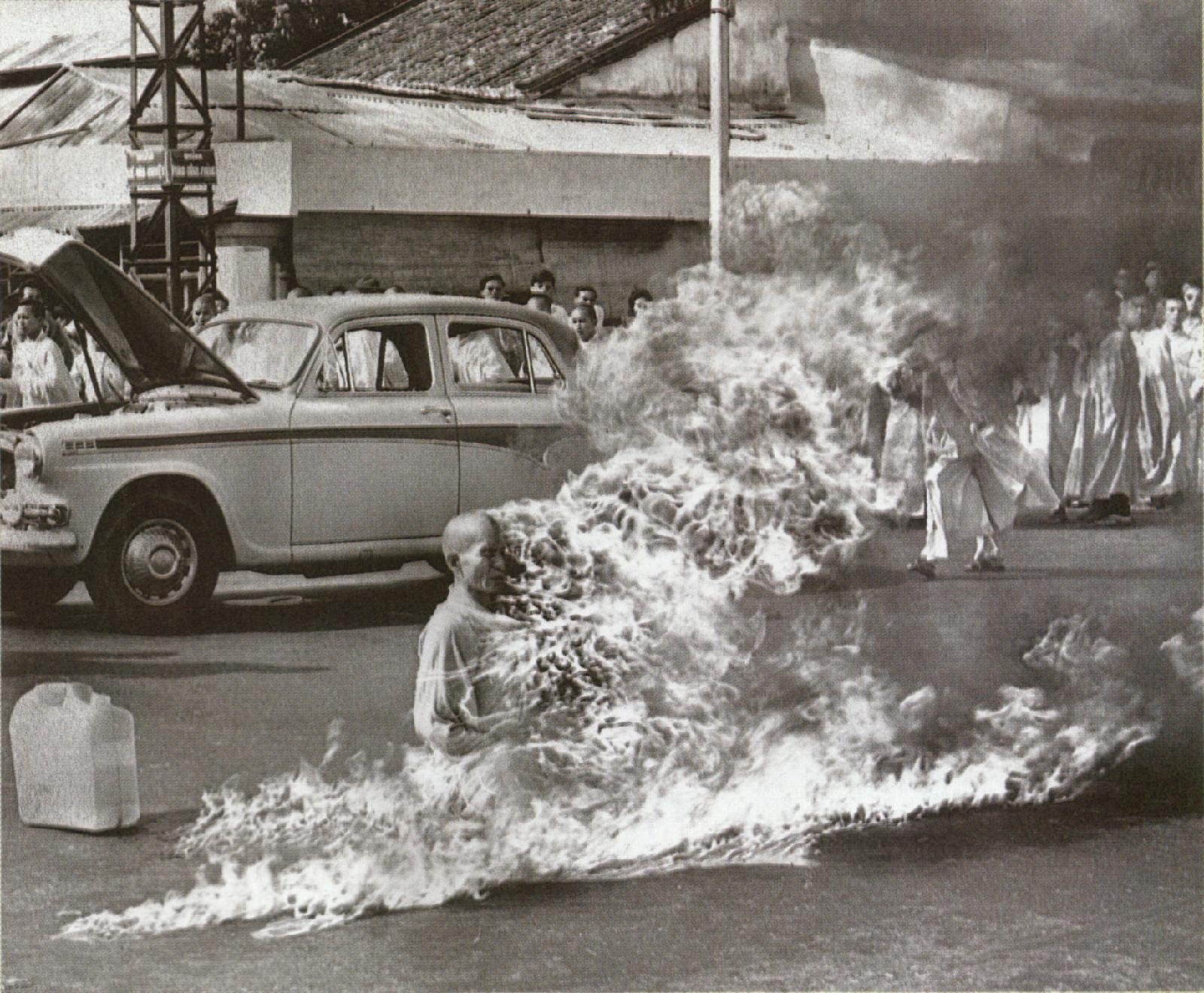
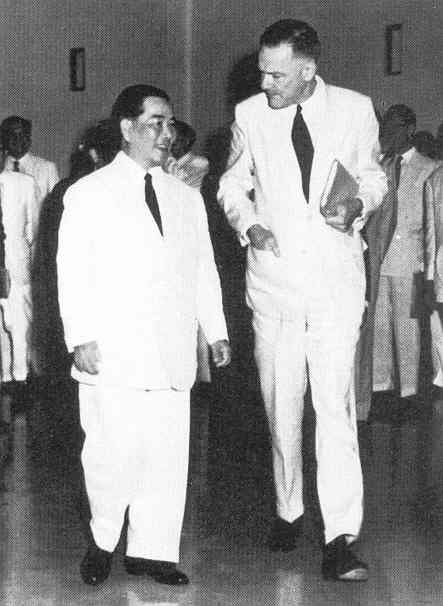
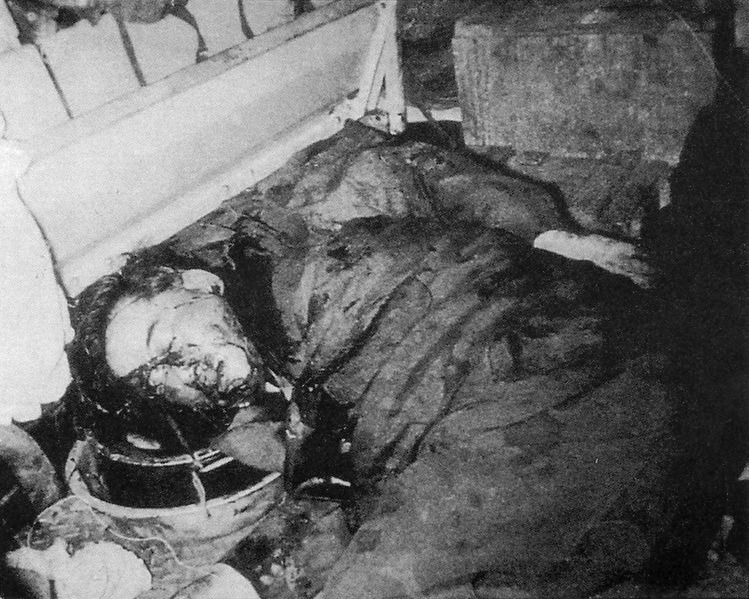
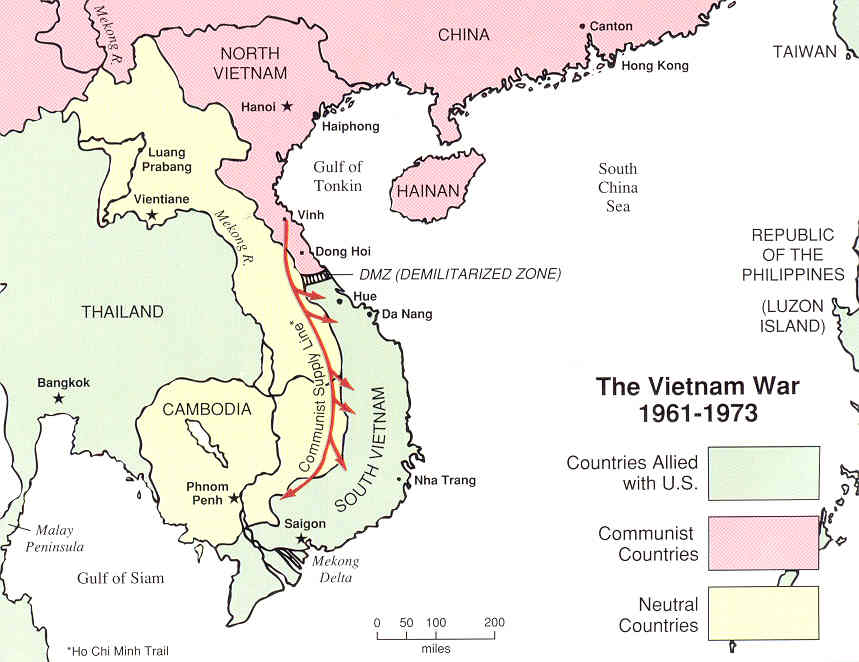
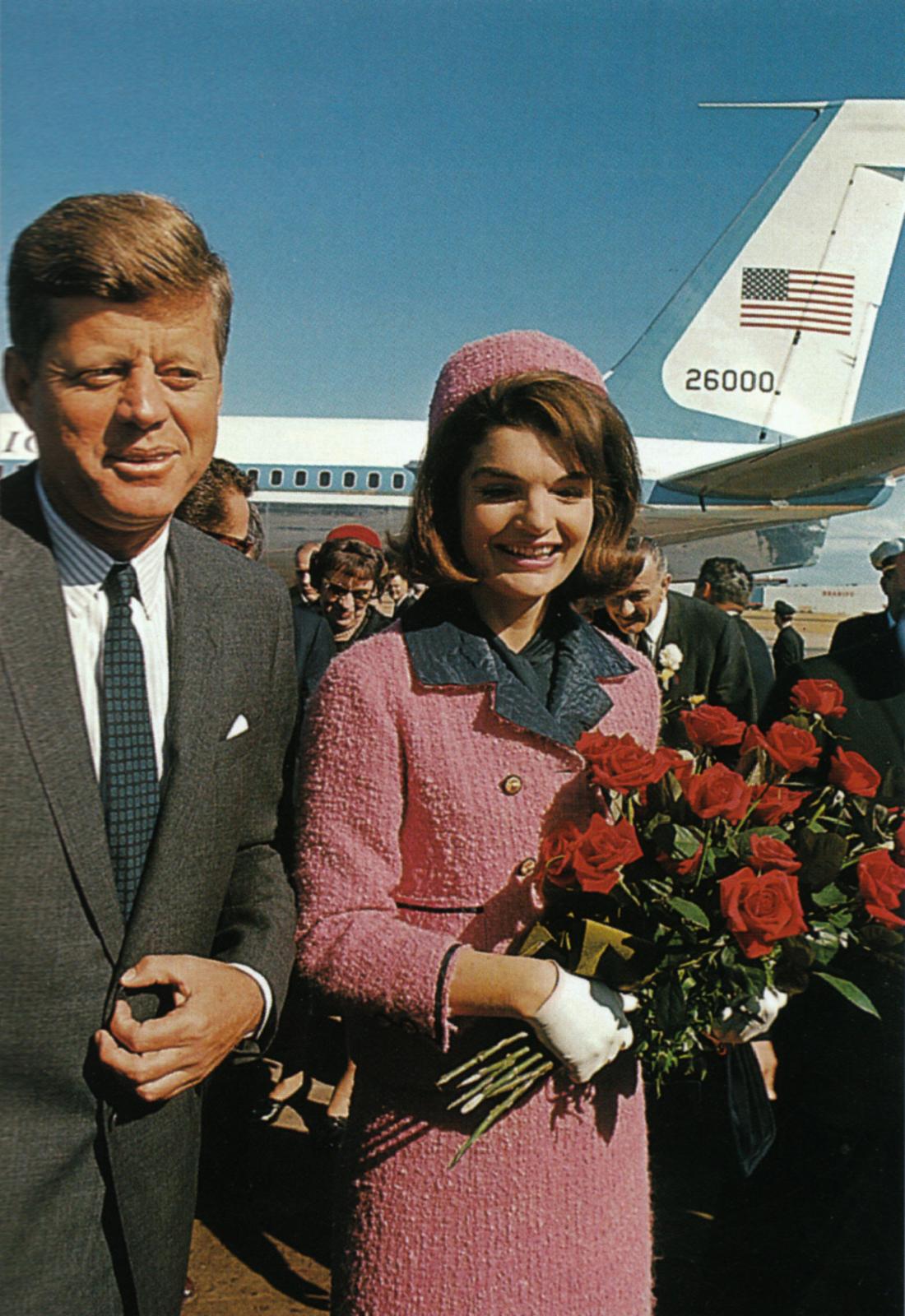
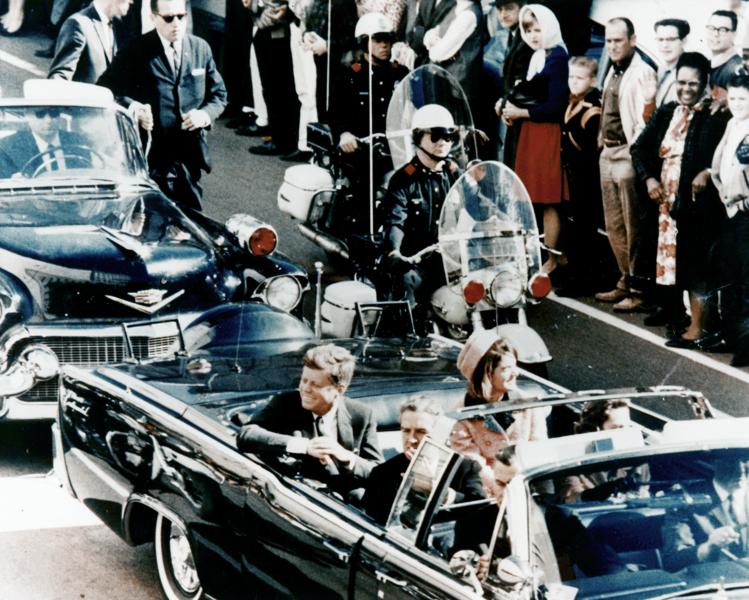
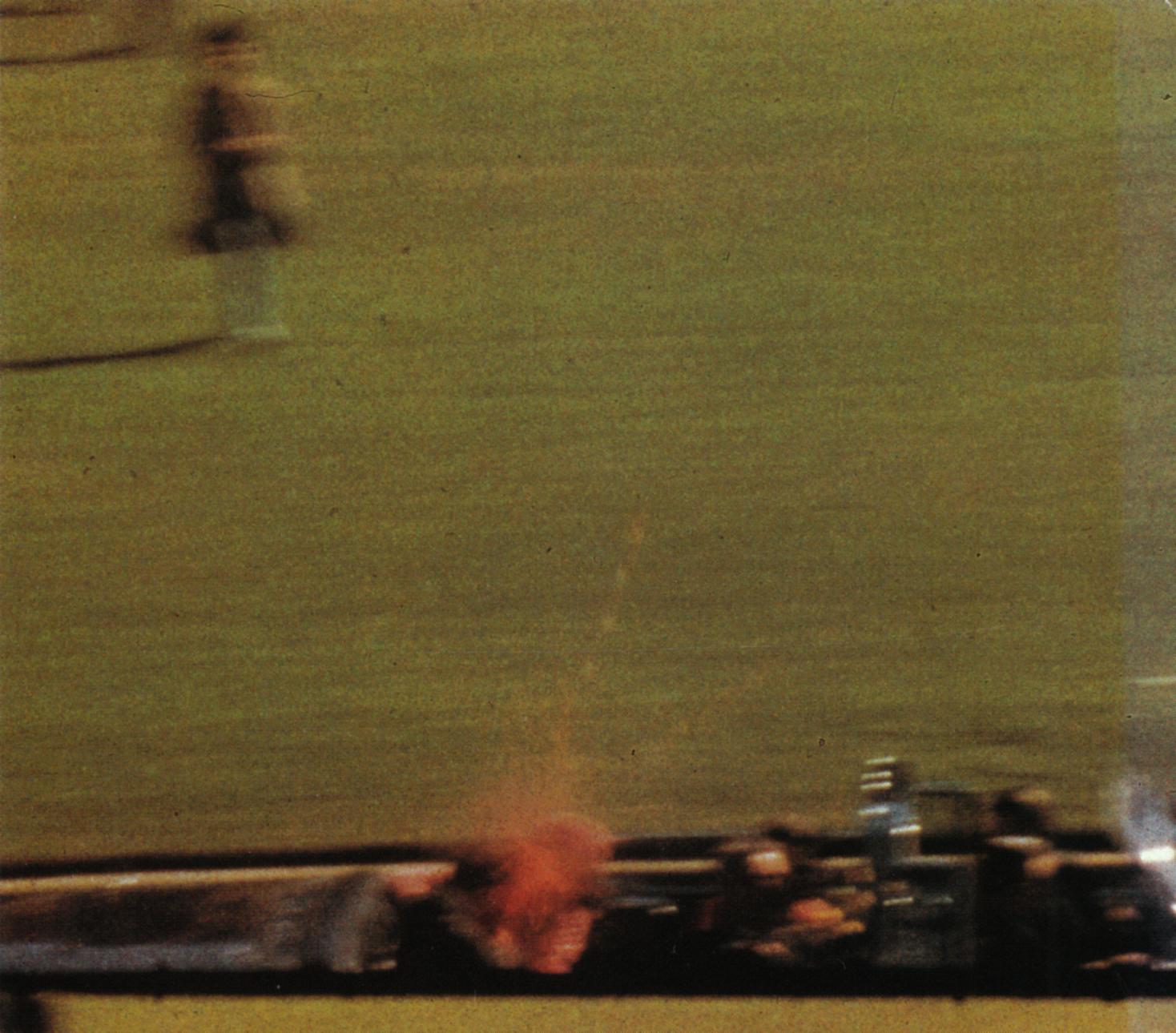
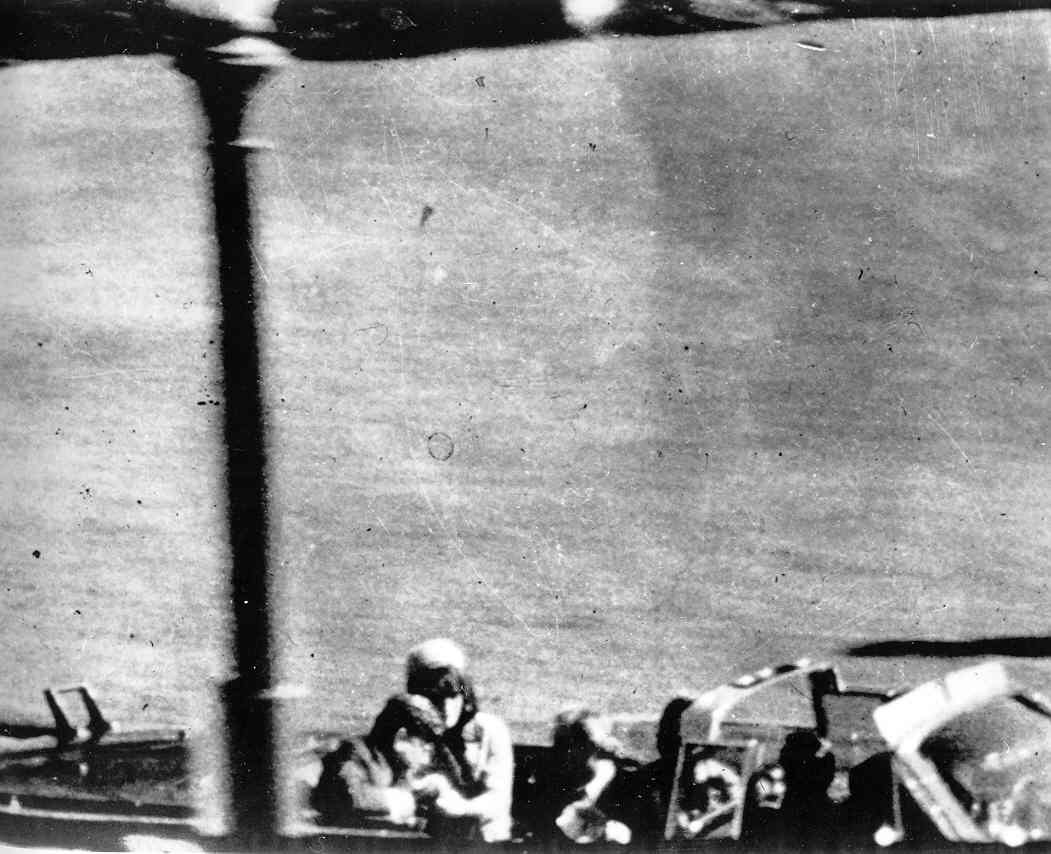
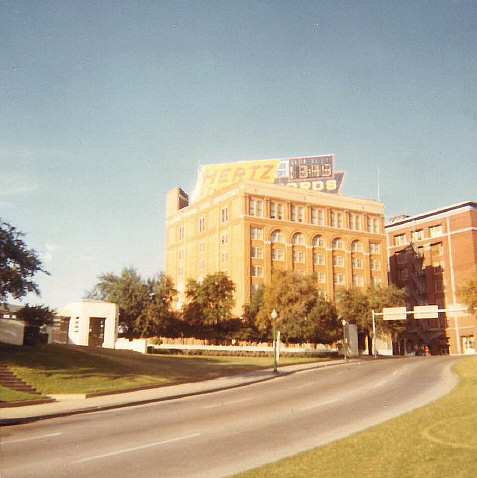
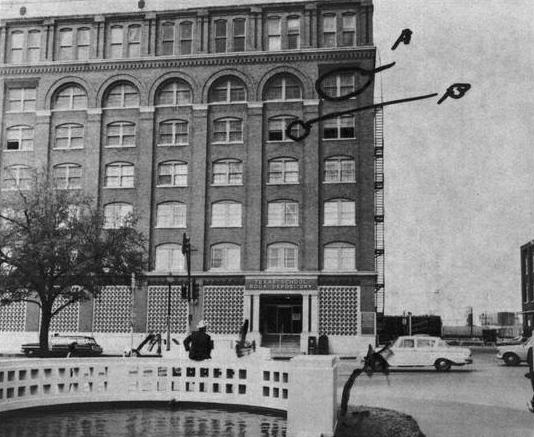
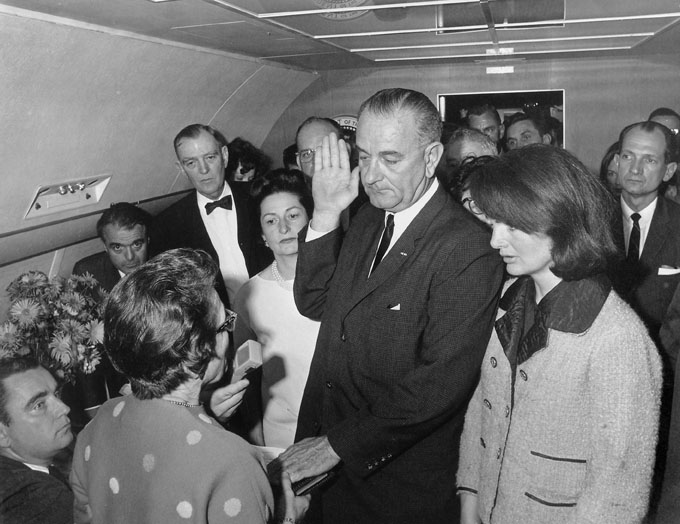
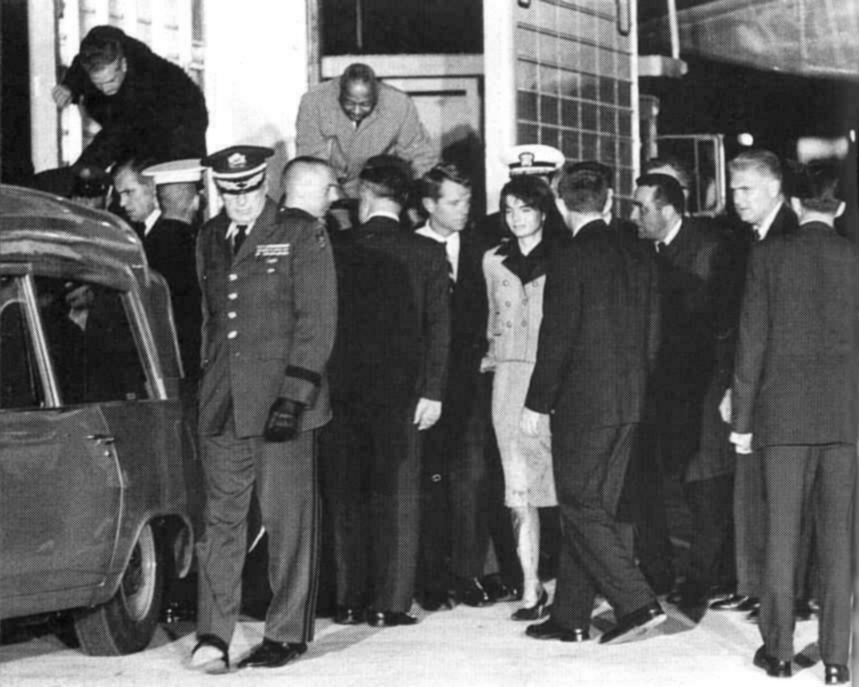
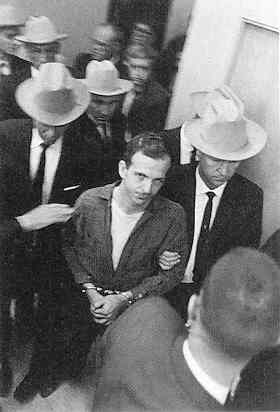

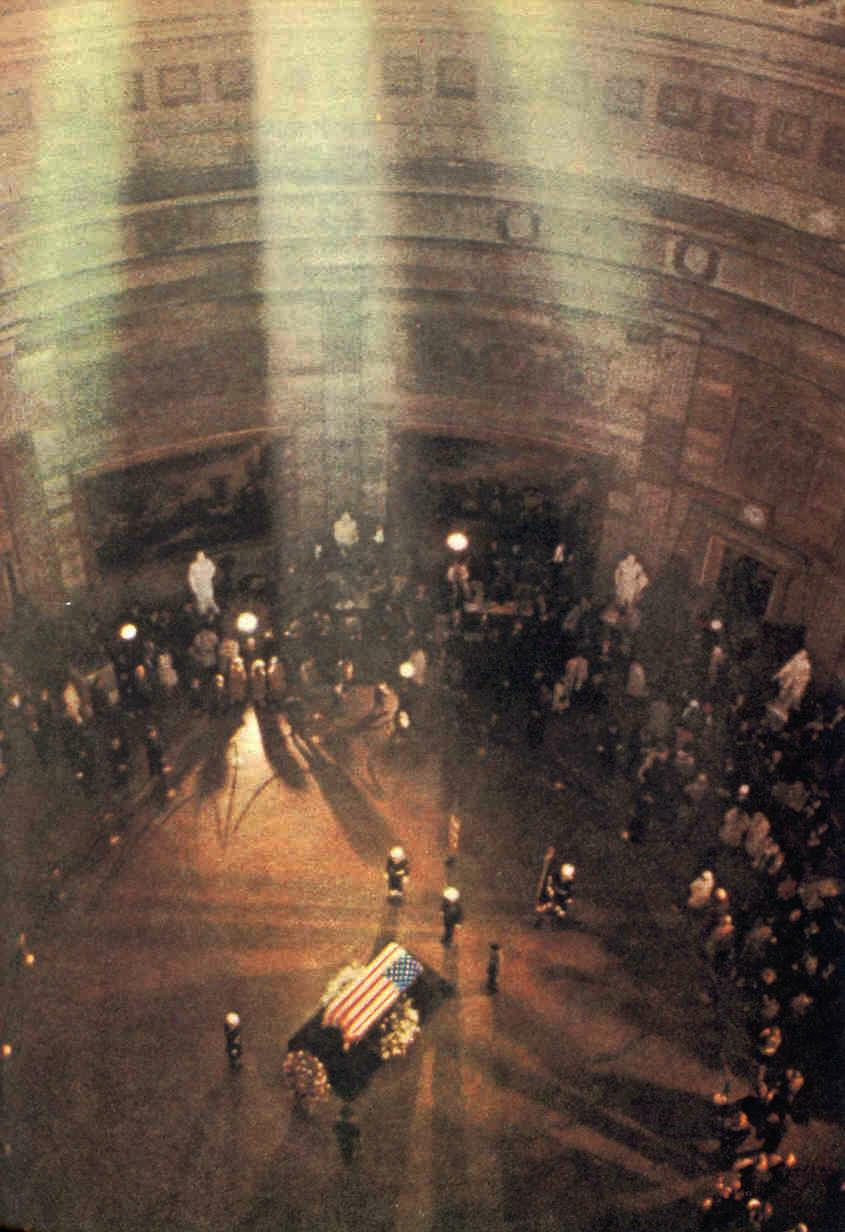

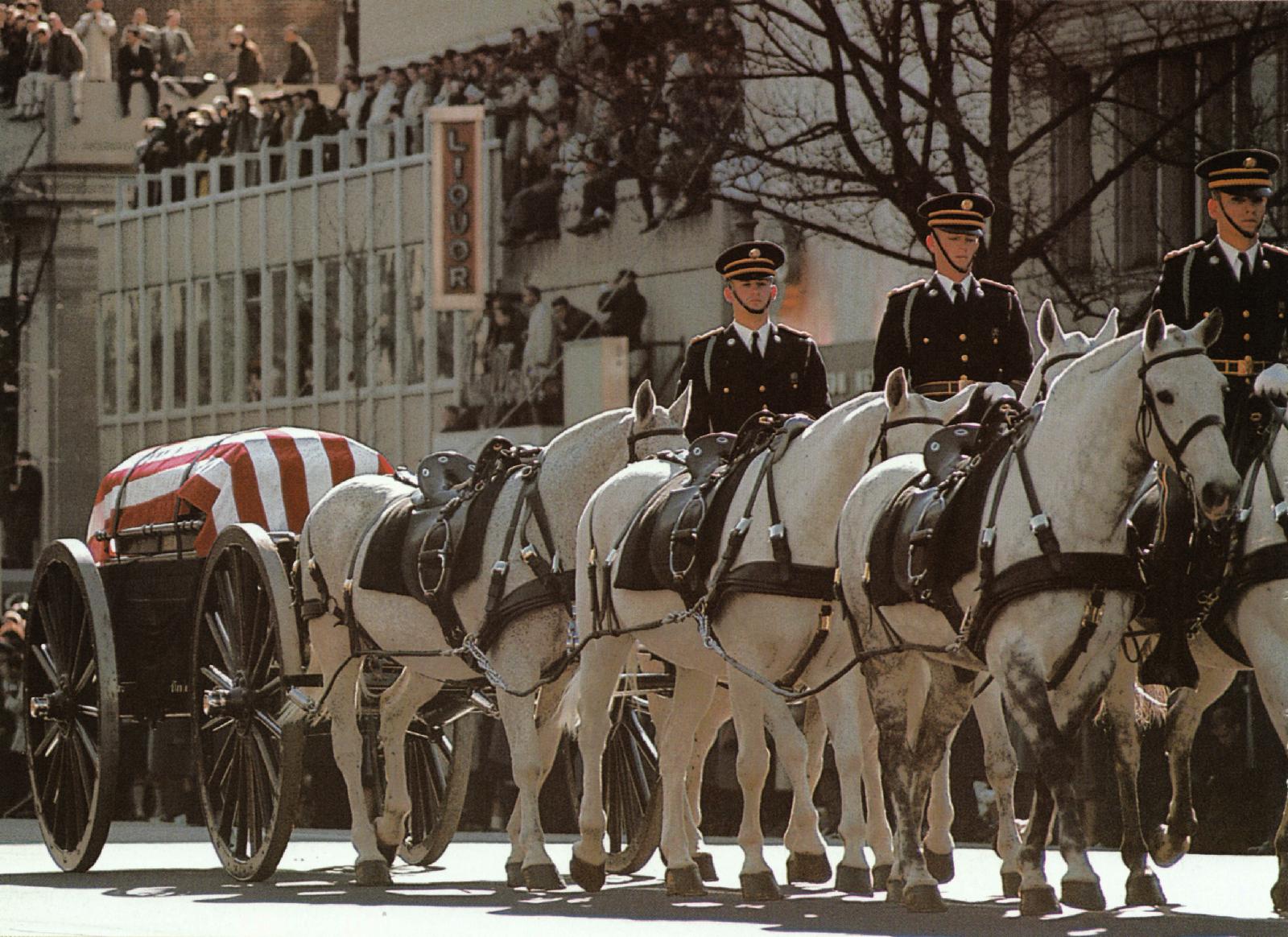
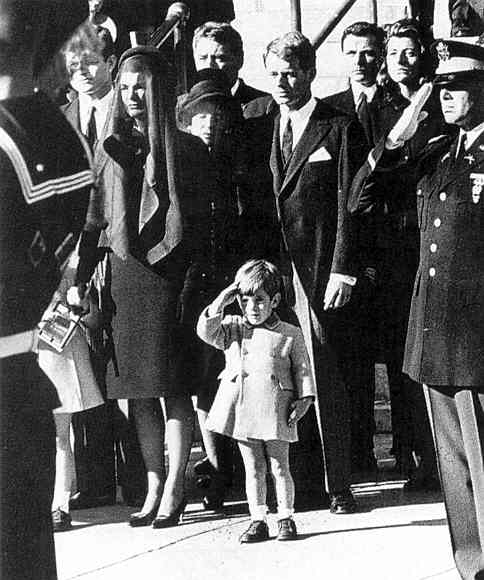
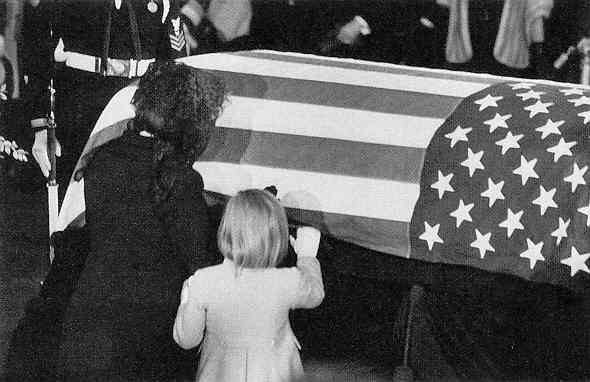
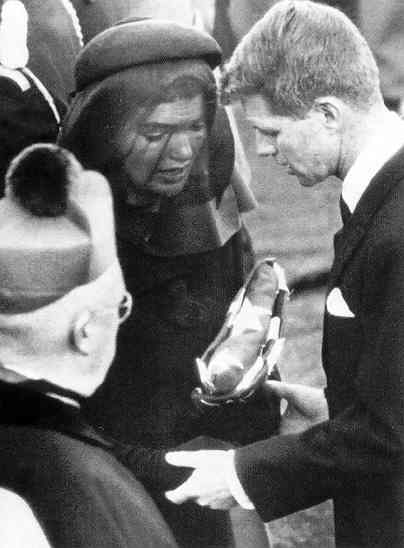
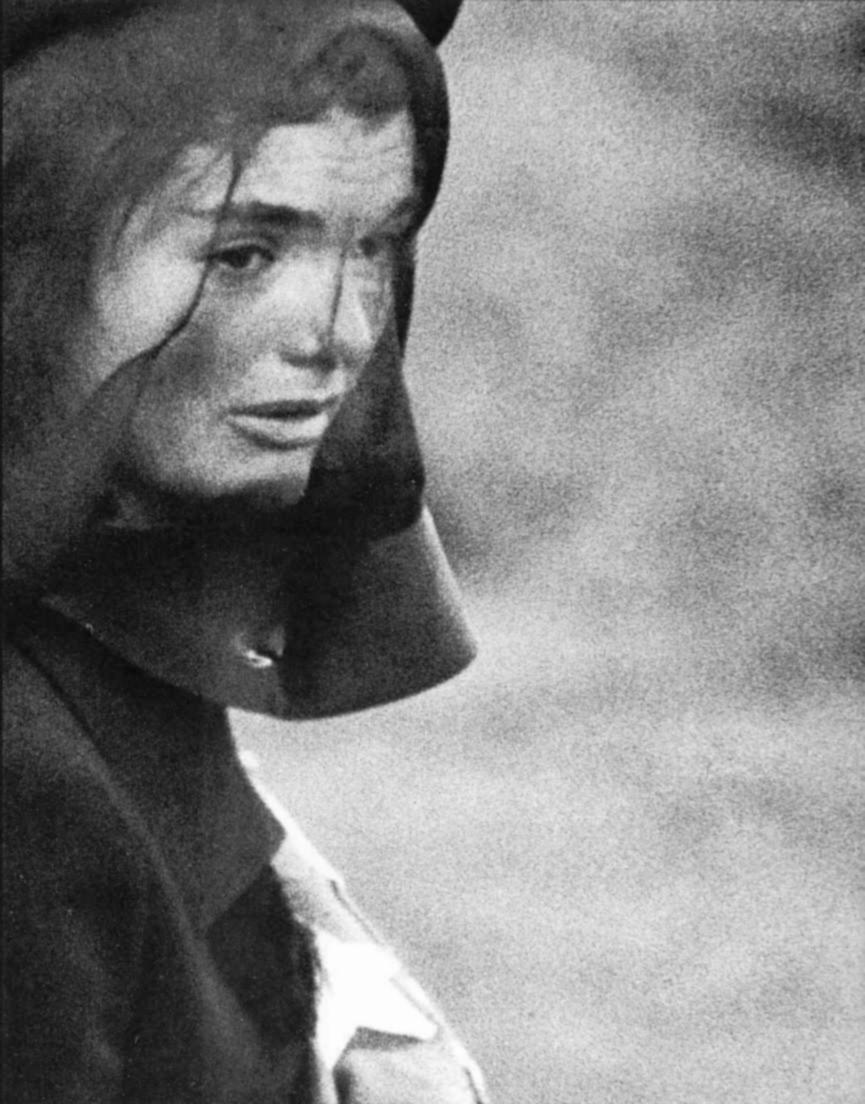
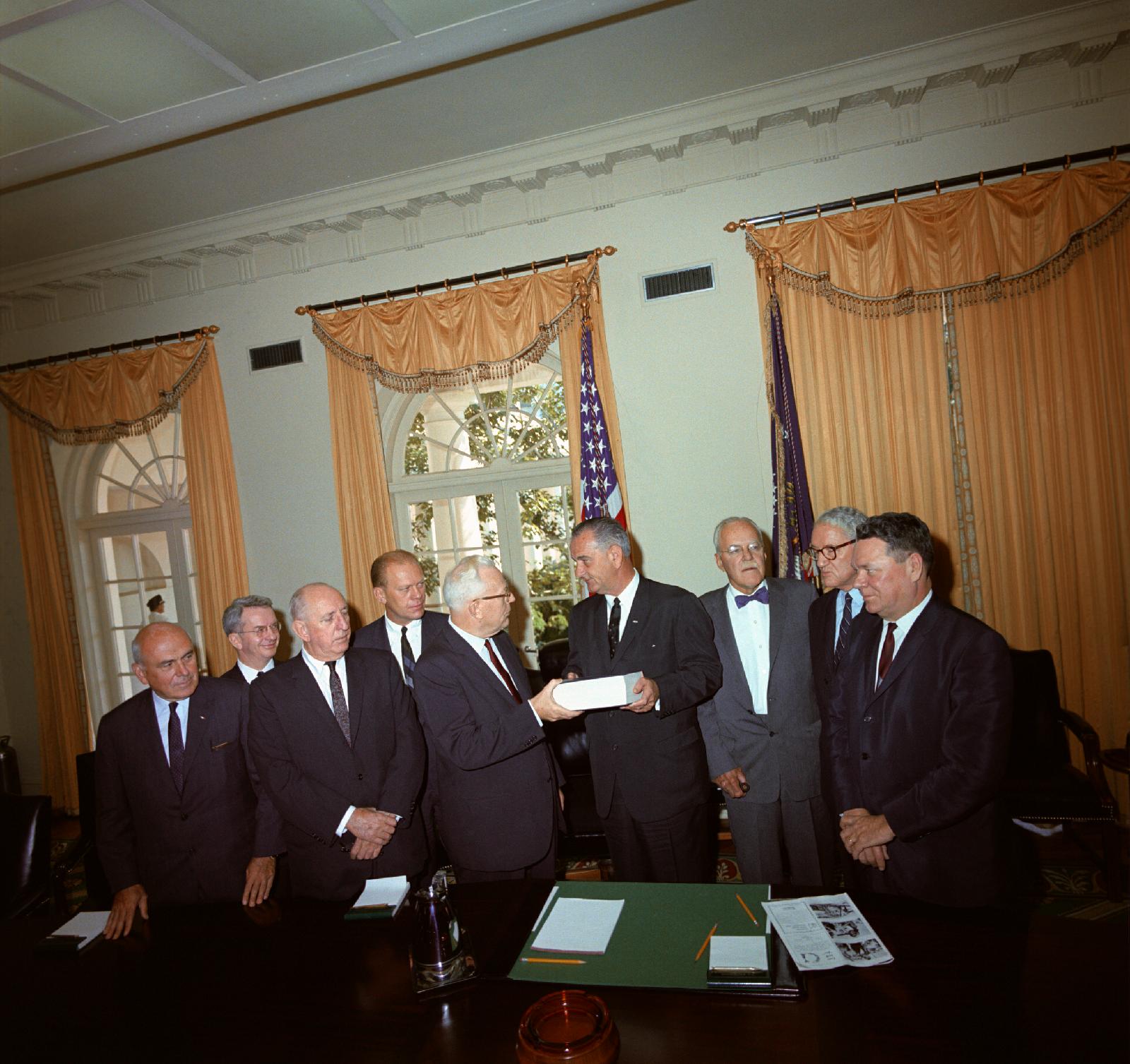
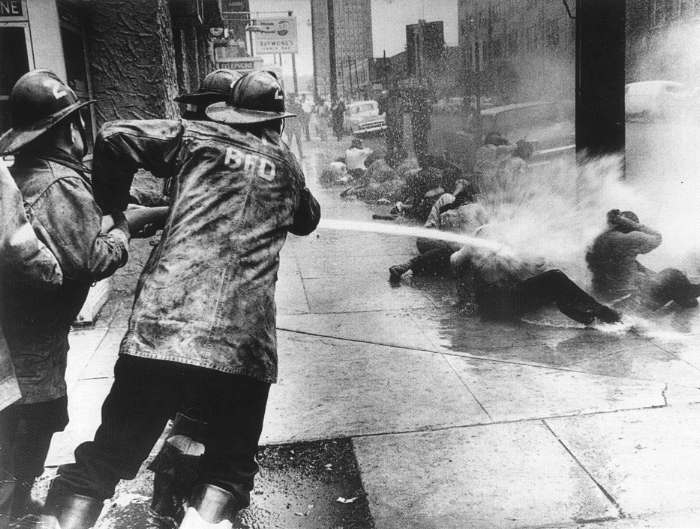
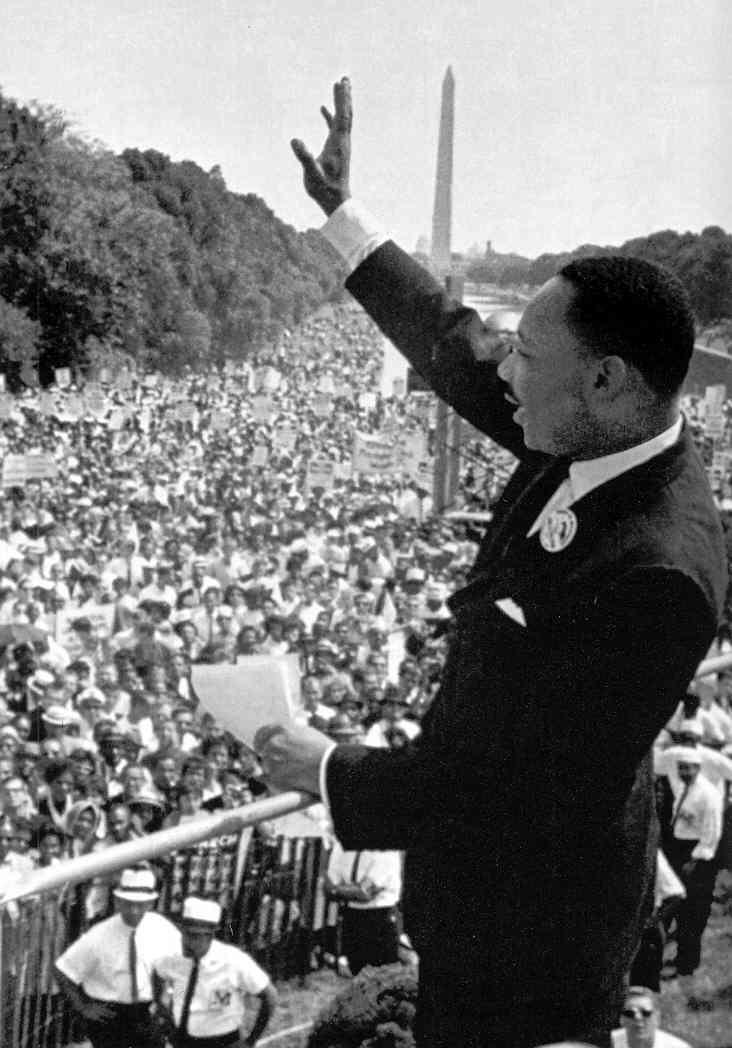 Dr. Martin Luther King, Jr.
and the March on Washington – August 28, 1963
Dr. Martin Luther King, Jr.
and the March on Washington – August 28, 1963